Assignment and Exam
Introduction
2016-AS1-1
2015-AS1-1
2014-AS1-1
2013-AS1-1
2012-AS1-1
Search in the news an article about privacy violations. Describe briey the reported incident anddiscuss its privacy implications (at most half page). The reference to the article should be given.
Discretionary Access Control
Homework-DAC
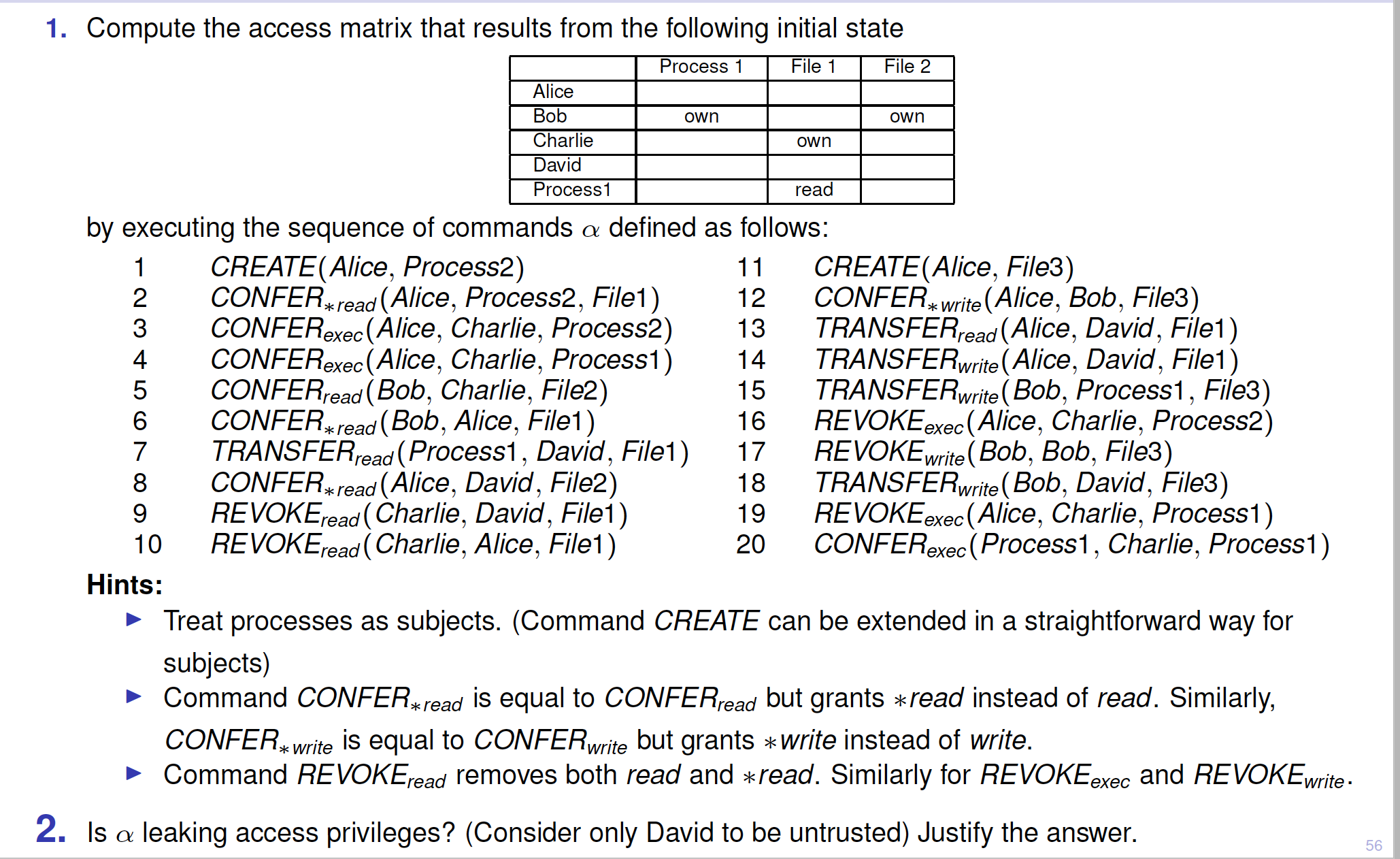
2016-AS1-2-HUR
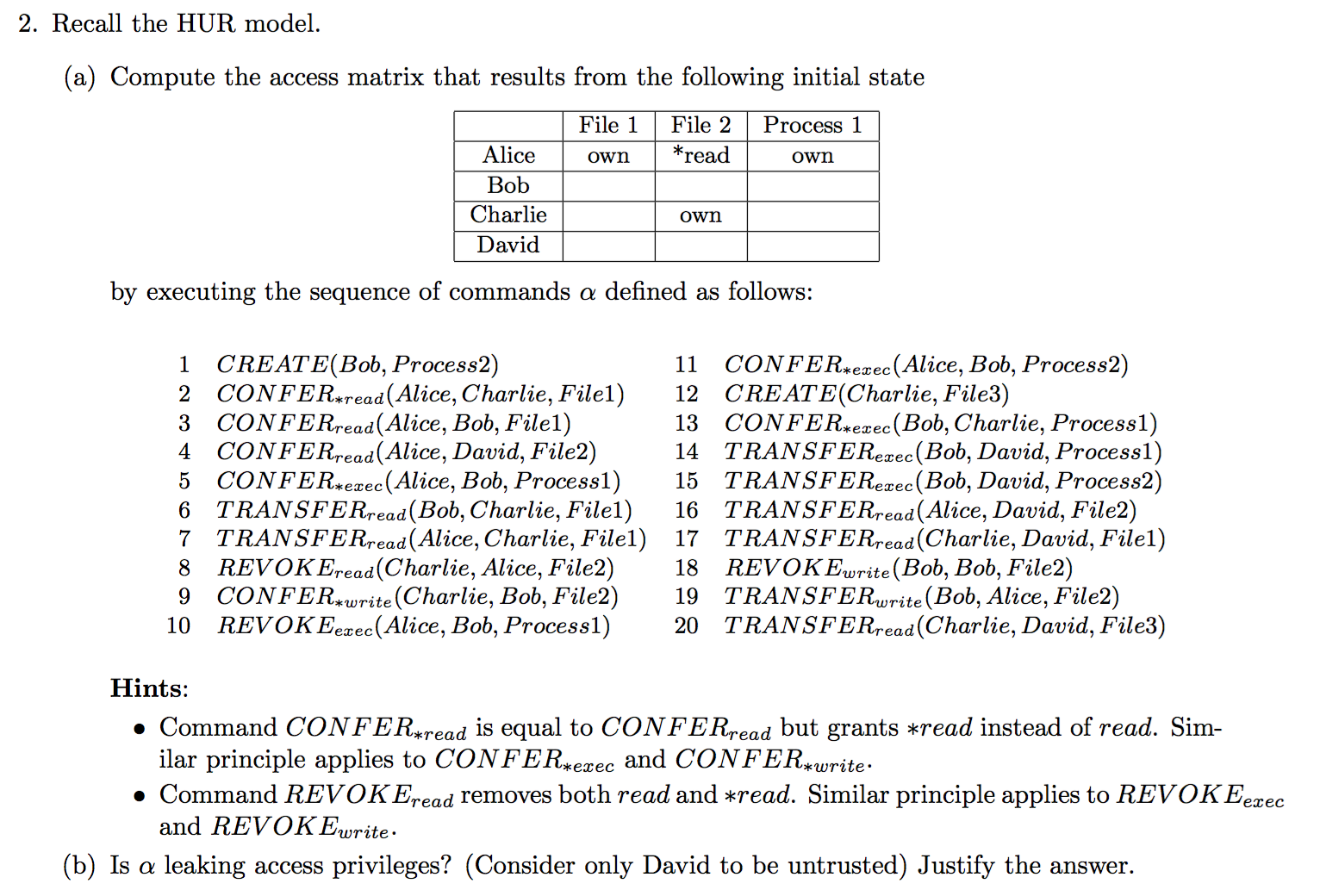
2016-AS1-6-Take-grant-HRU
- Describe the Take-grant access control model. Discuss the main differences between the Take-grantmodel and the Harrison-Ruzzo-Ullman model.
2015-AS1-2-HUR
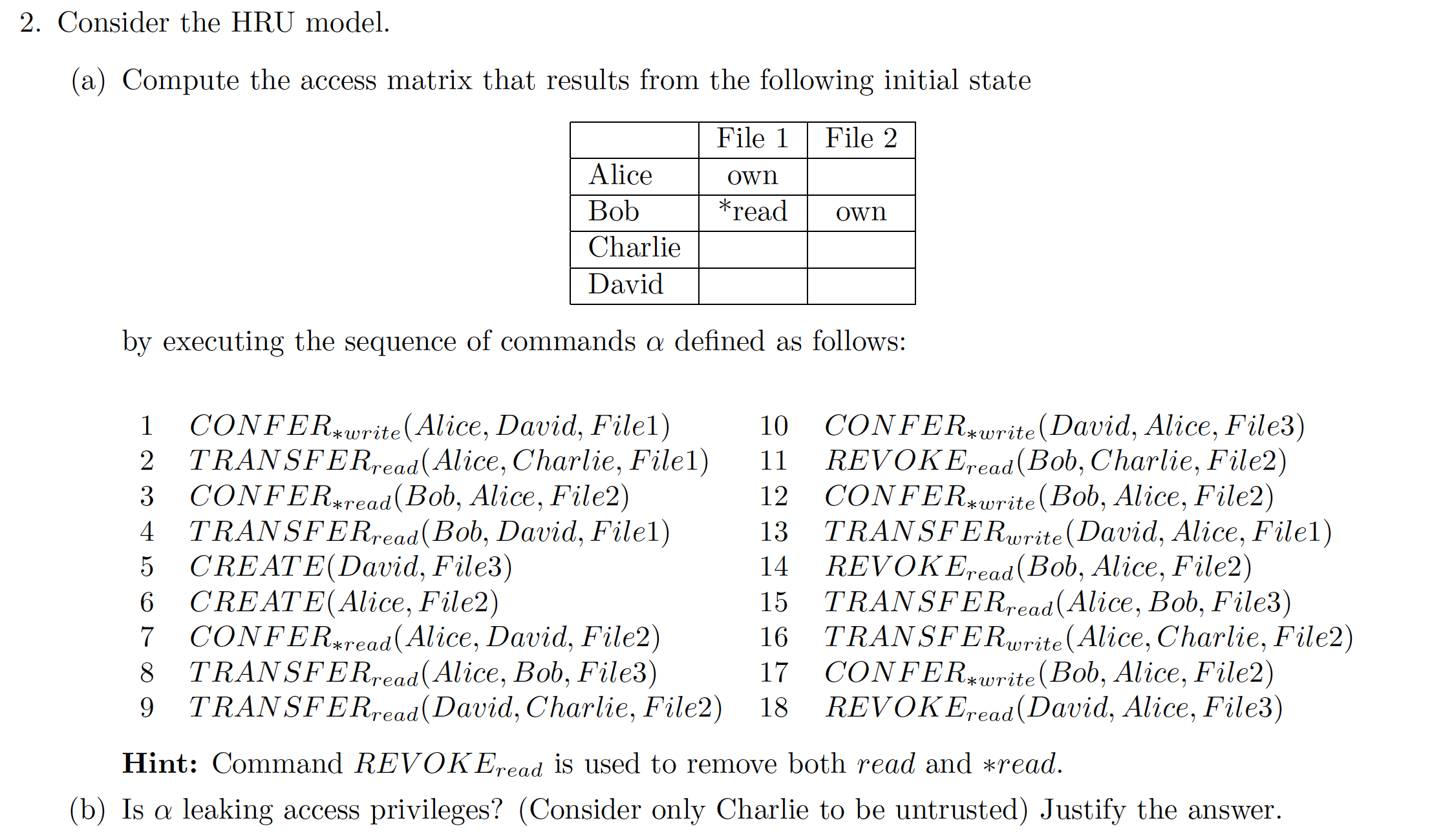
2015-s-AS1-2
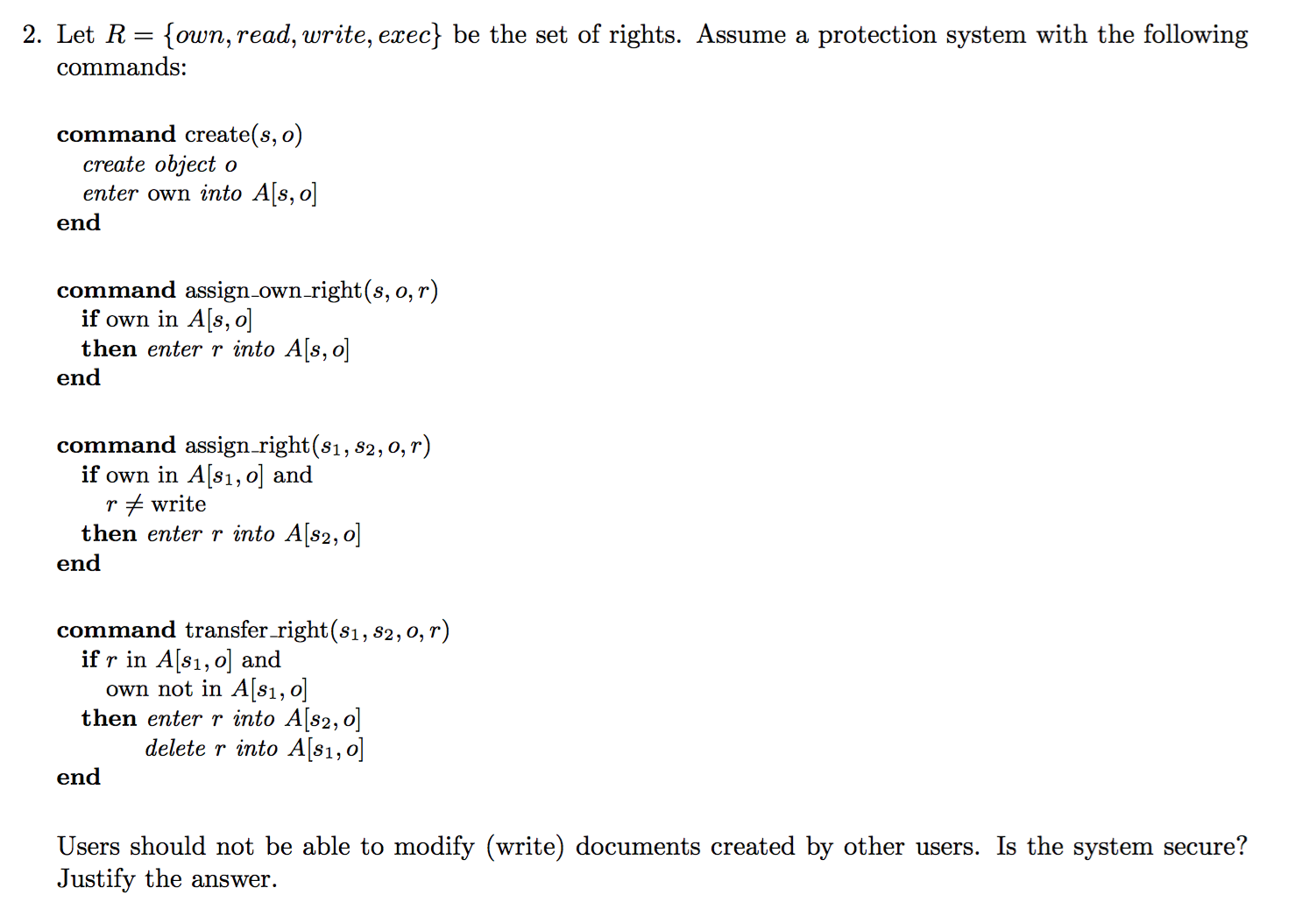
2015-EX1-1-HUR
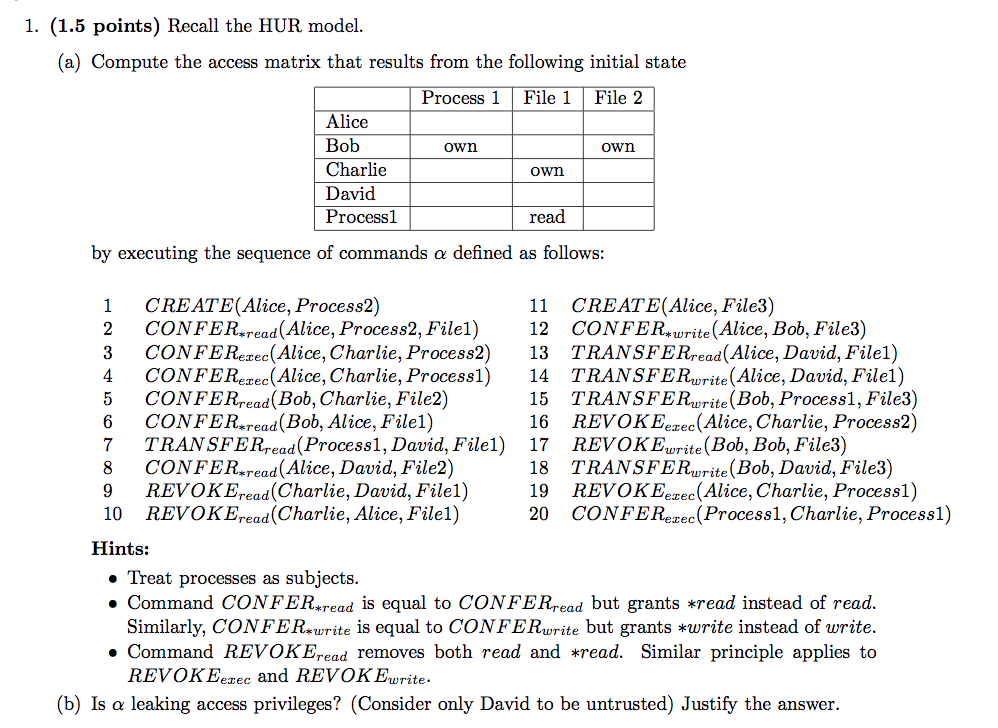
2014-AS1-2-HUR
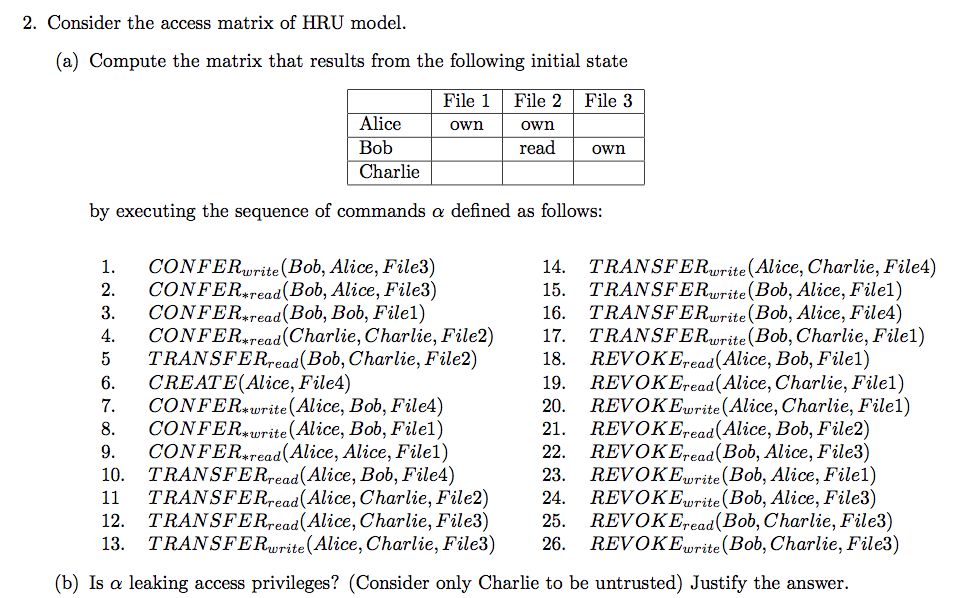
2014-AS1-6-Take-grant-HRU
- Describe the Take-grant access control model. Discuss the main differences with the Harrison-Ruzzo-Ullman model.
2014-EX1-1-Take-grant-HRU

2014-EX2-1-command
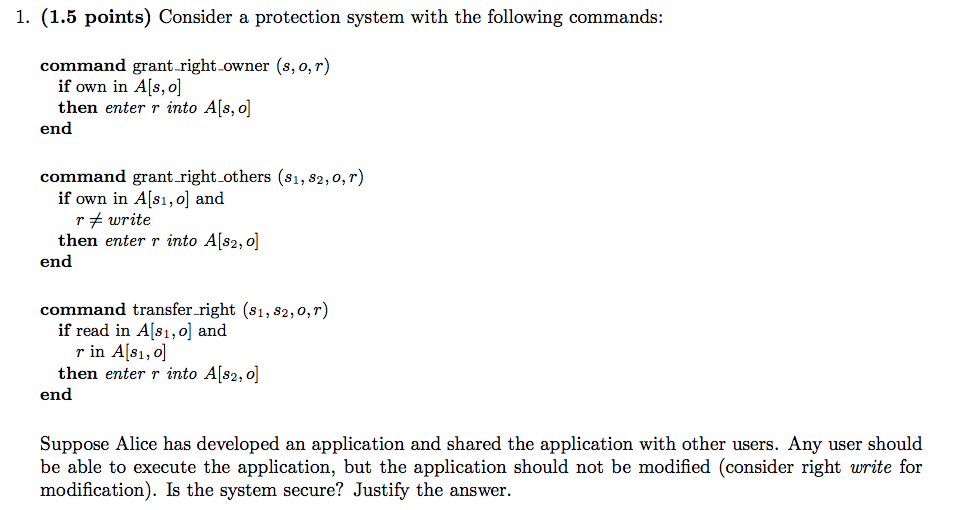
2013-AS1-2-command
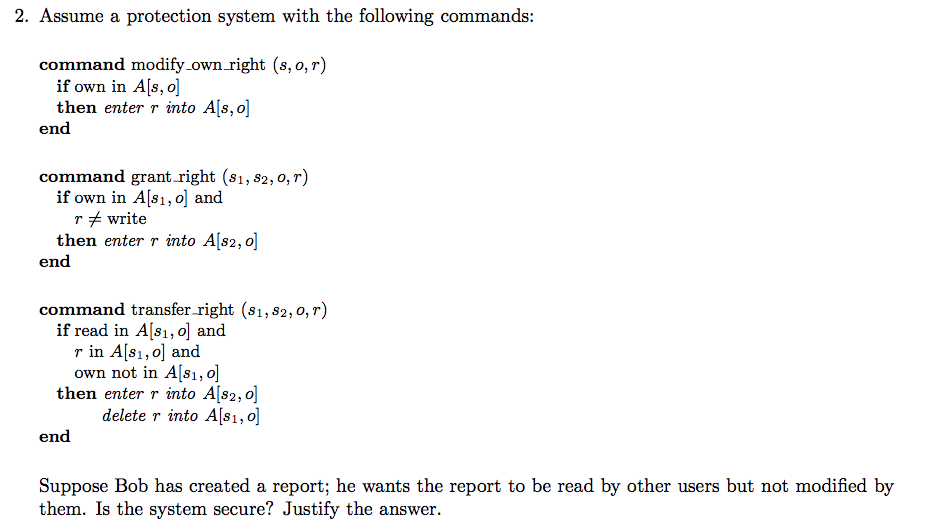
2013-AS1-6-accesscontrol-SELinux
- Describe the access control system used in SELinux.
- https://access.redhat.com/documentation/en-US/Red_Hat_Enterprise_Linux/6/html/Security-Enhanced_Linux/chap-Security-Enhanced_Linux-Introduction.html
2013-EX1-1-HUR
- Explain the safety problem in Harrison-Ruzzo-Ullman Model. State under which condition(s)the safety problem is decidable.
2013-EX2-1-command
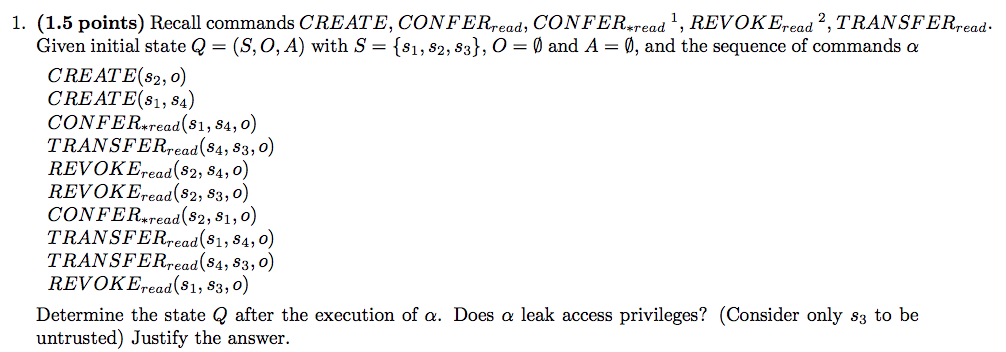
2012-AS1-2-HUR
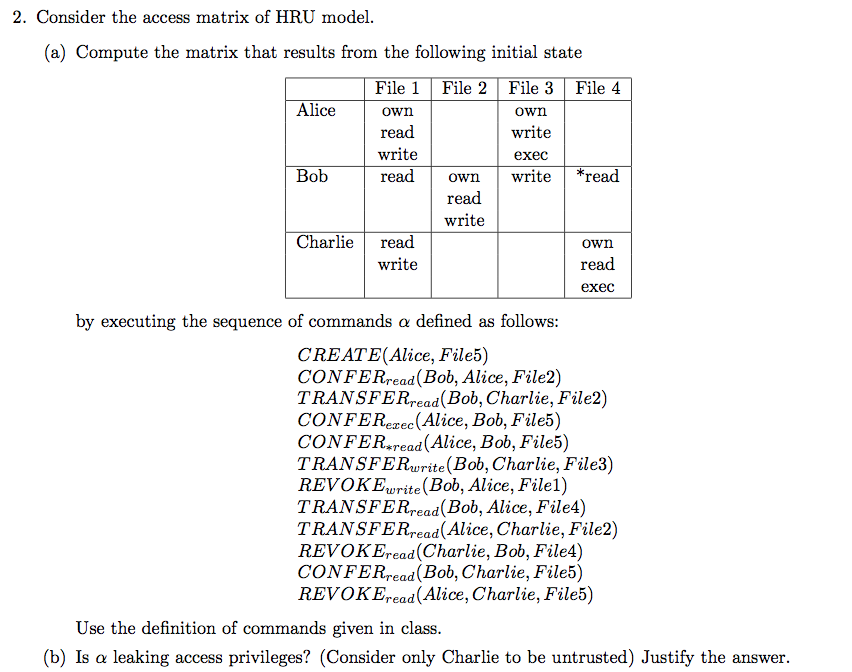
2012-AS1-3-accessmatrix

2012-EX1-1-HUR
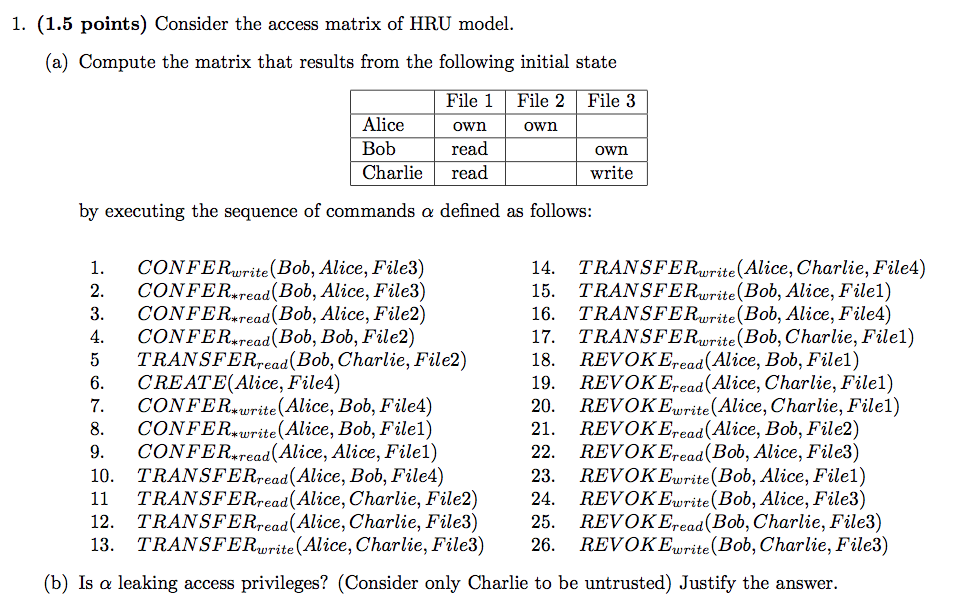
Mandatory Access Control
homework
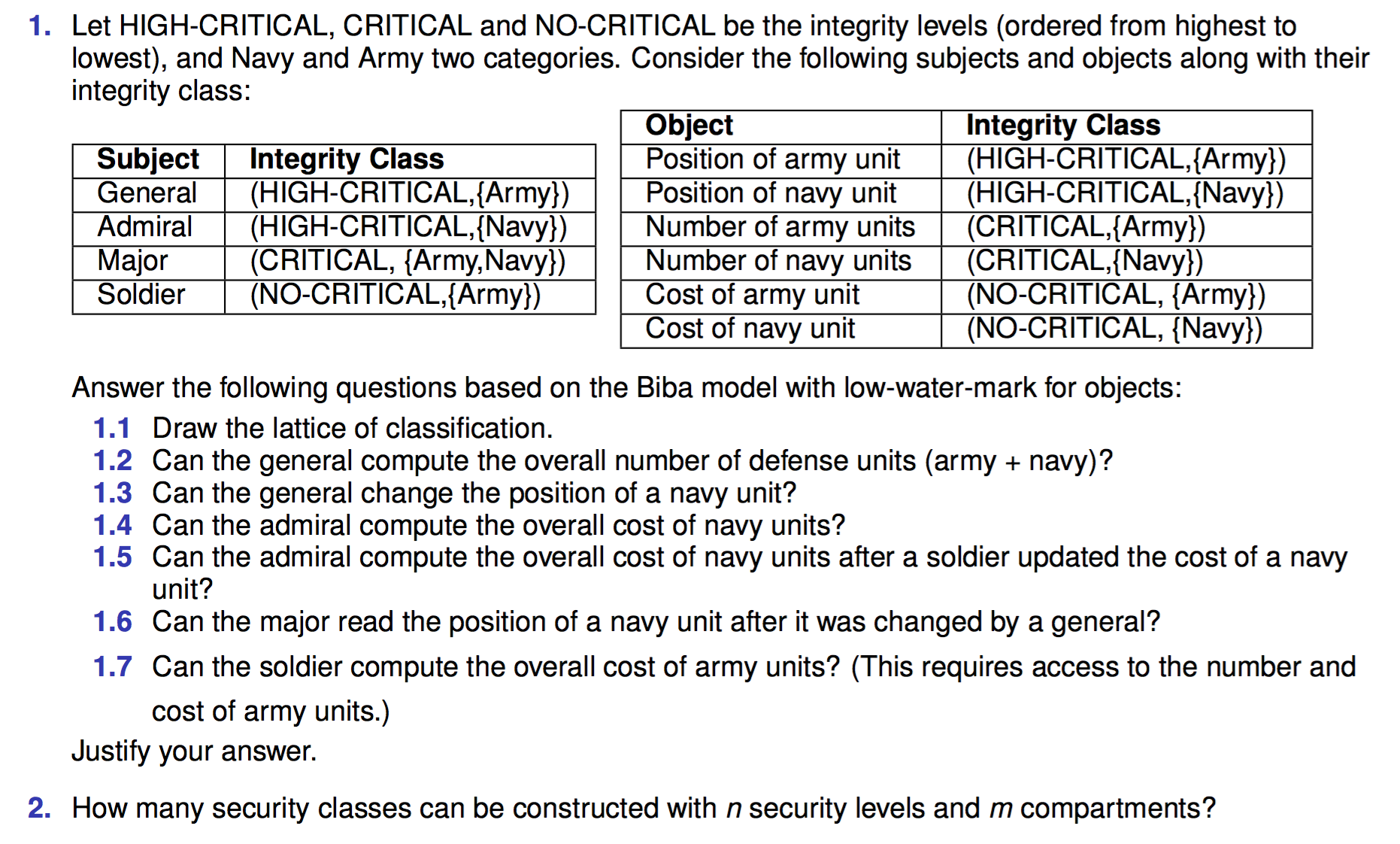
2016-AS1-3-Biba-low-watermark

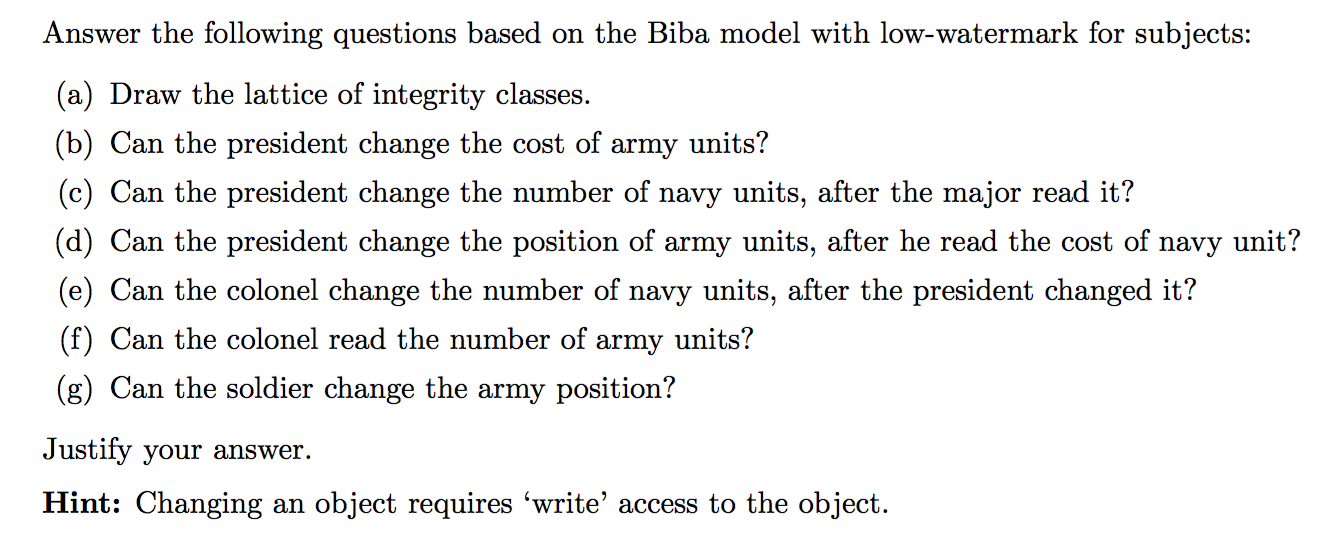
2016-AS1-4-ChineseWall
- Show how the principles underlying Chinese Wall can be modeled in multilevel security.
2015-AS1-3-BLP
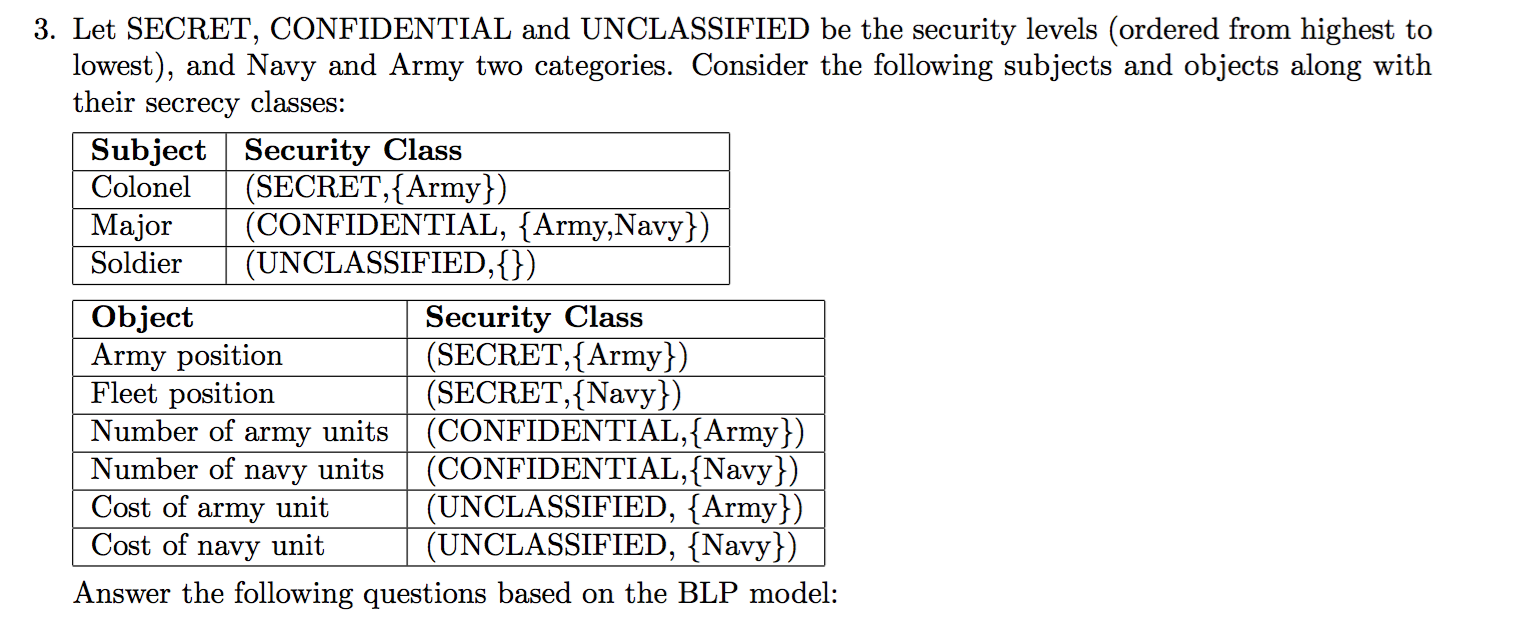

2015-s-AS1-3

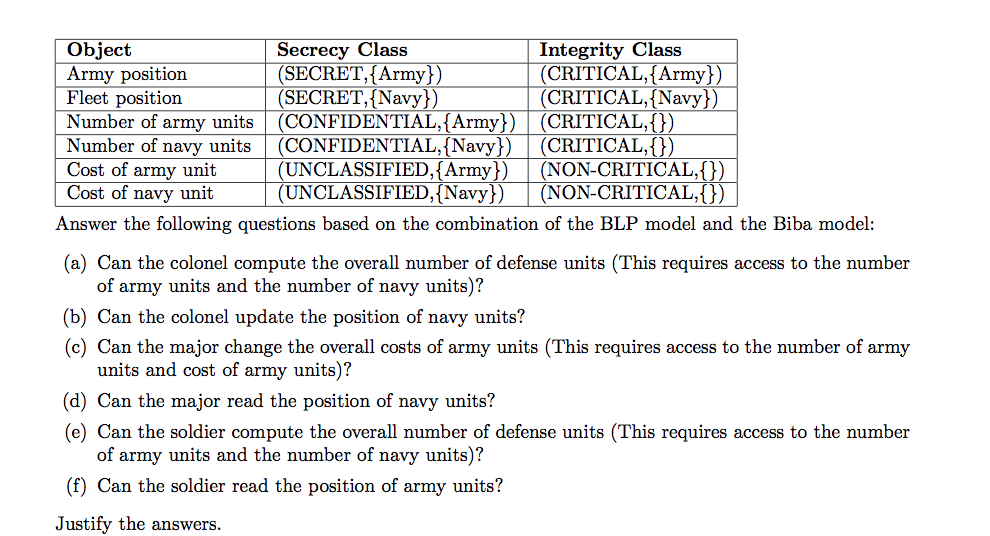
2015-AS1-4-ChineseWall-BLP
- Discuss the possibility of defining a Chinese Wall policy in the BLP Model.
2015-S-AS1-6
- Describe the access control system used in FreeBSD.
- https://www.freebsd.org/doc/handbook/mac.html
- RBAC
2015-AS1-6-ClarkWilson-Biba
- Describe the Clark-Wilson integrity model. Discuss the main differences between this model and theBiba model.
- http://security1.win.tue.nl/~zannone/teaching/CS4080/Material/sam-fosad.pdf
2015-EX2-1-Biba-low-watermark
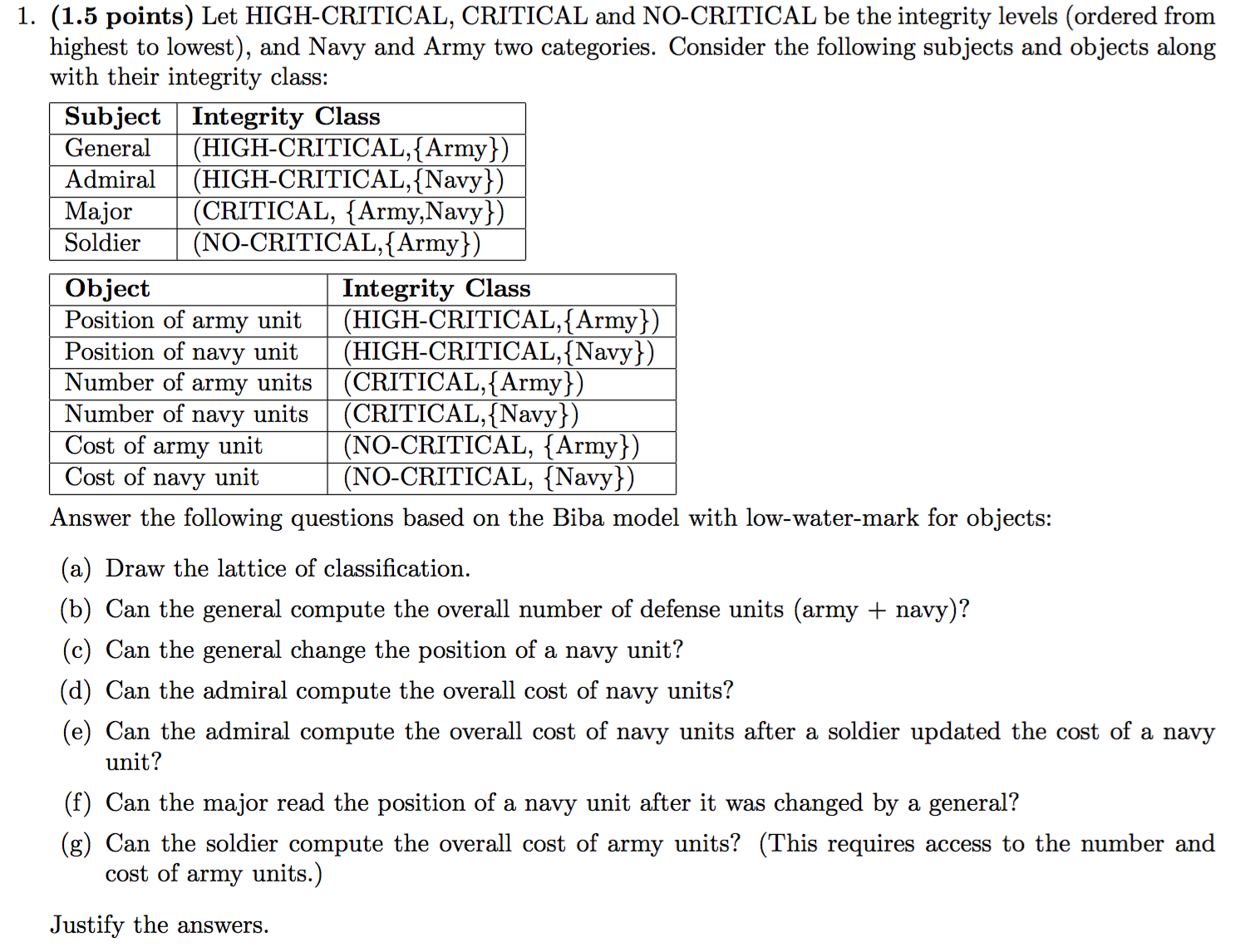
2015-EX2-2-ChineseWall
- Explain the goal of the Chinese Wall model and describe the main concepts and properties of the model.
2014-AS1-3-lattice-lub-glb
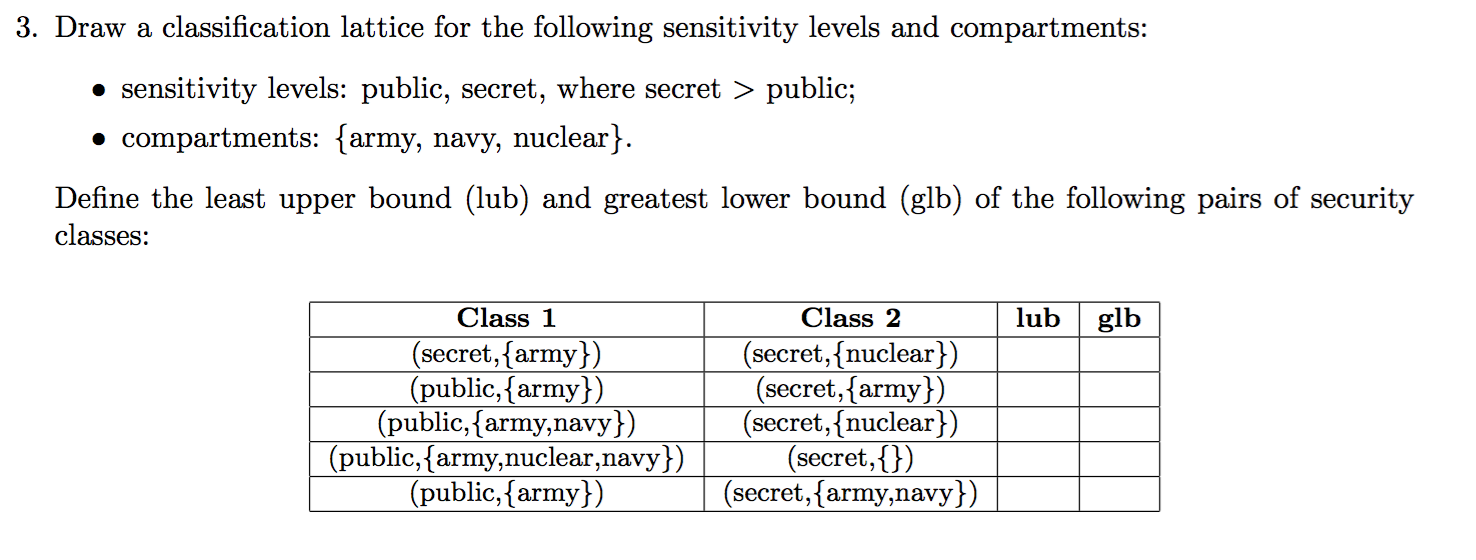
2014-AS1-4-ChineseWall

2014-EX1-2-BLP-Biba
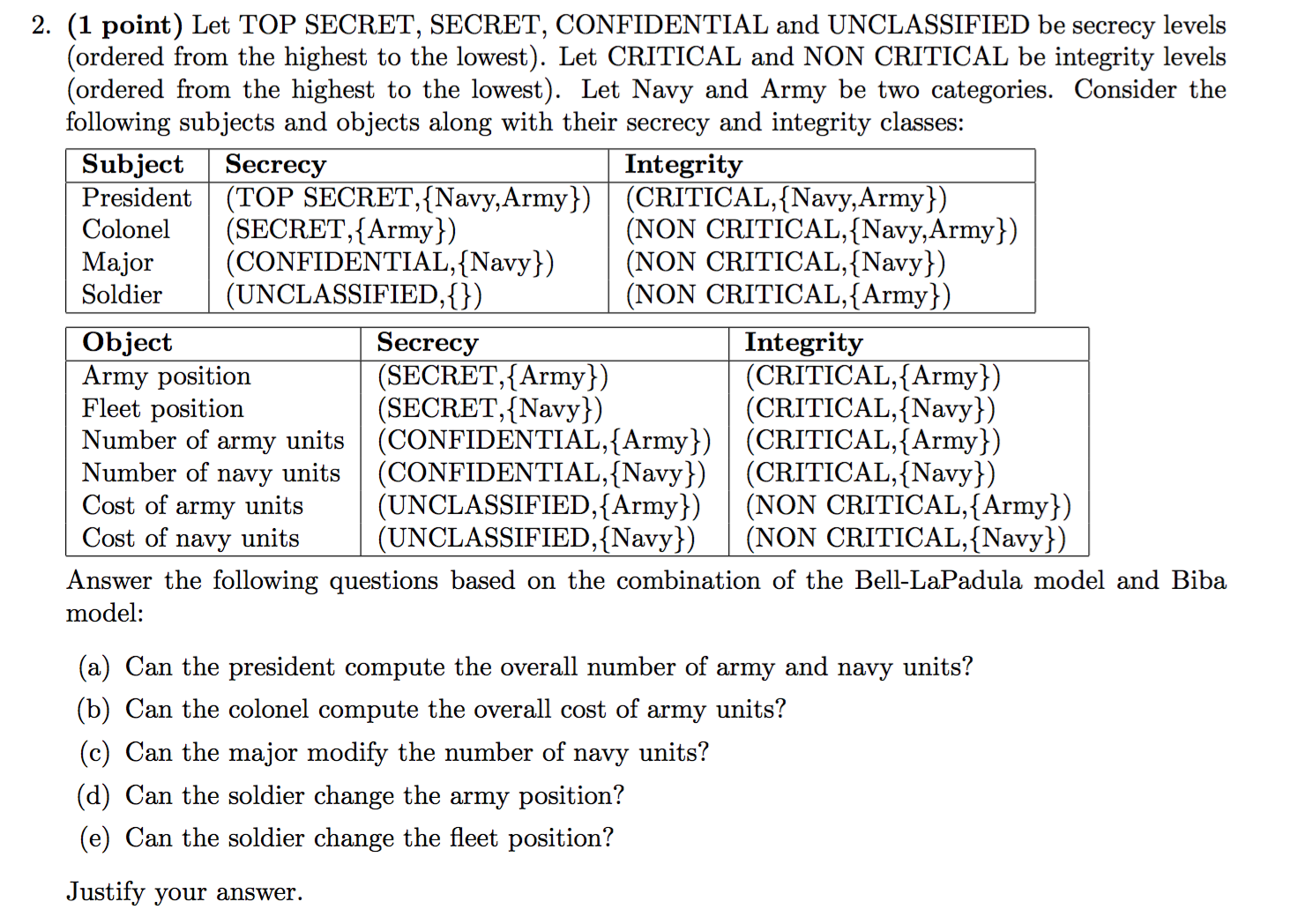
2013-AS1-3-BLP
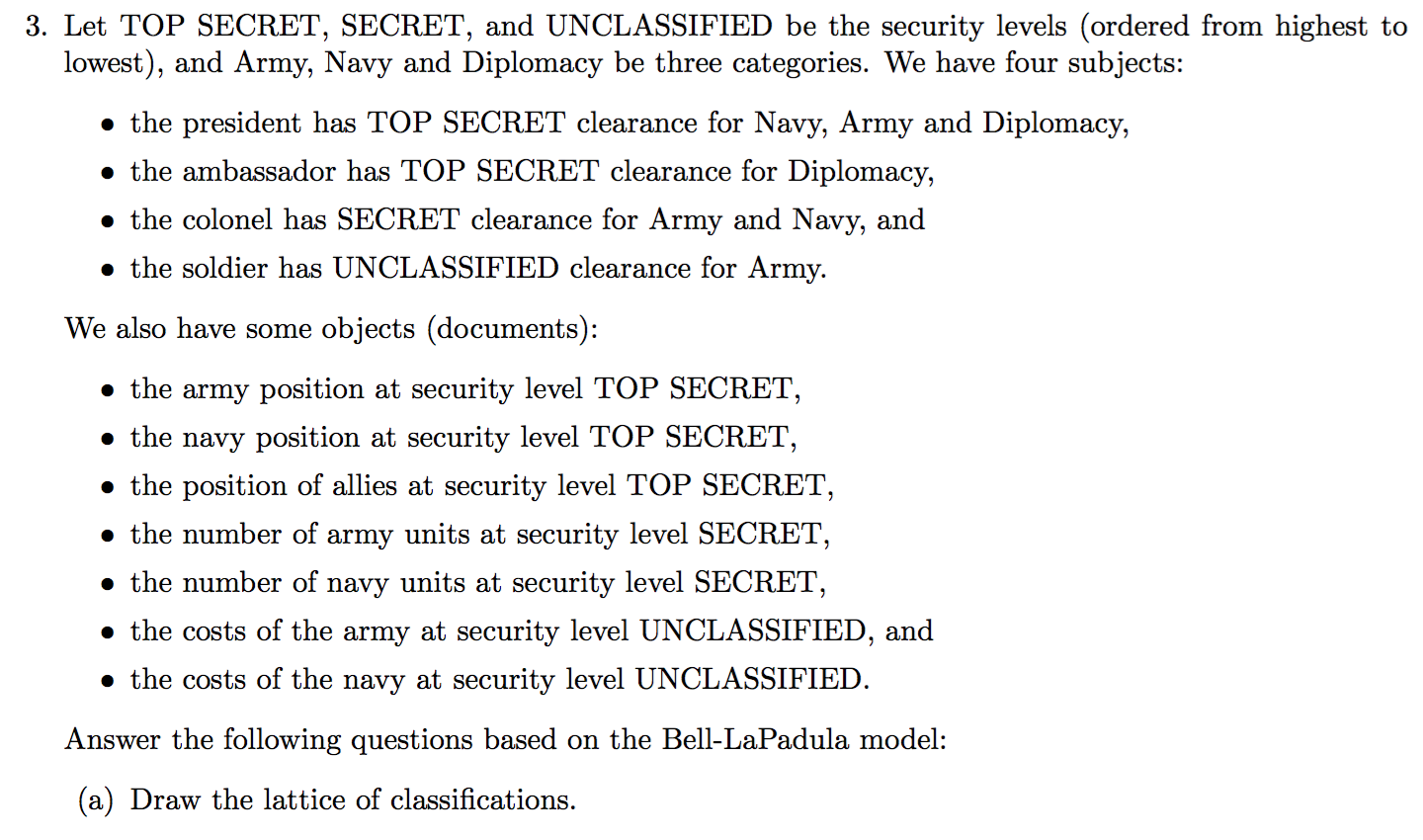

2013-AS1-4-ChineseWall-BLP
- Define a construction to emulate the Chinese Wall model using BLP model. Discuss the limitations(if any) of the construction.
2013-EX1-2-Biba
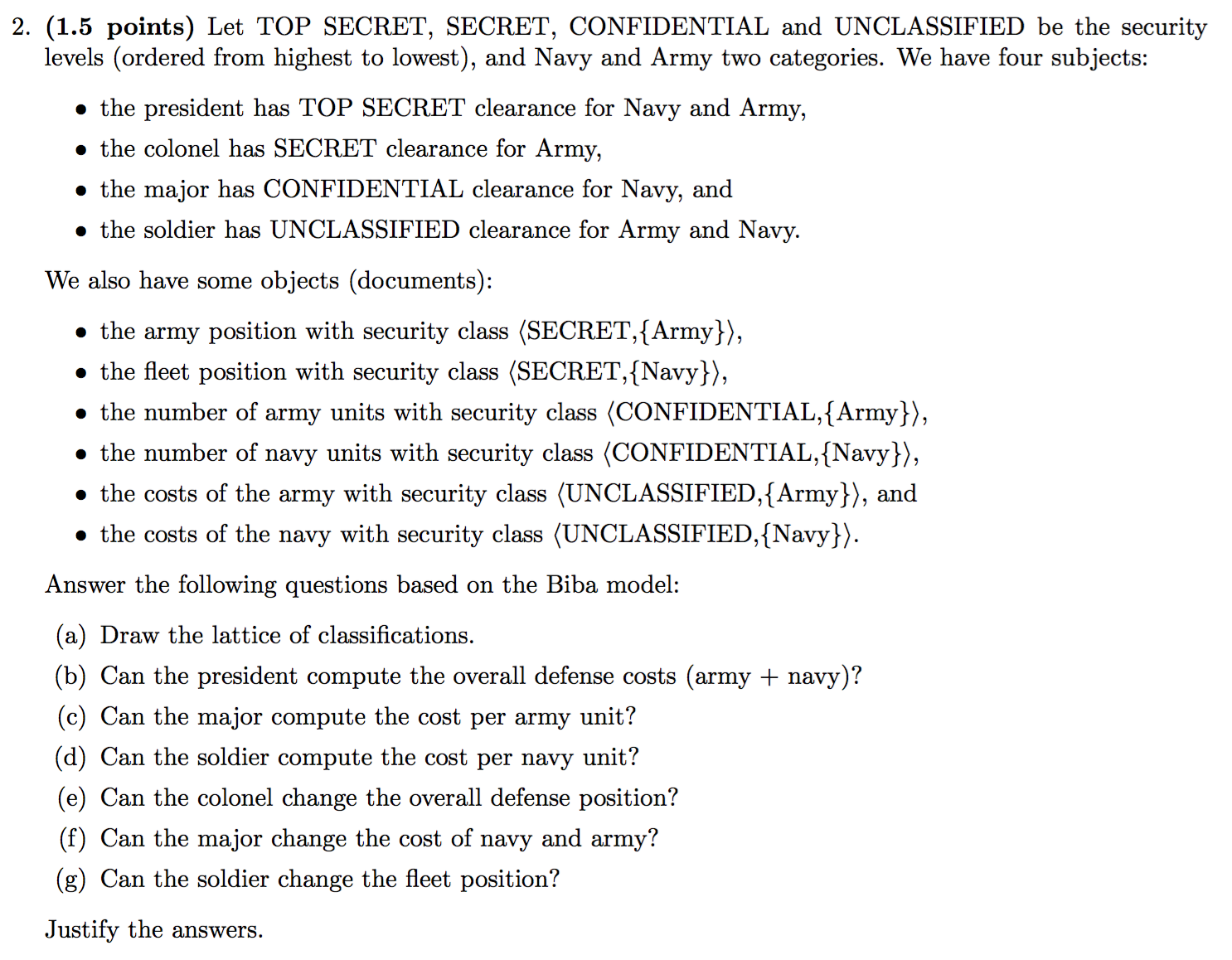
2013-EX2-2-BLP-Biba
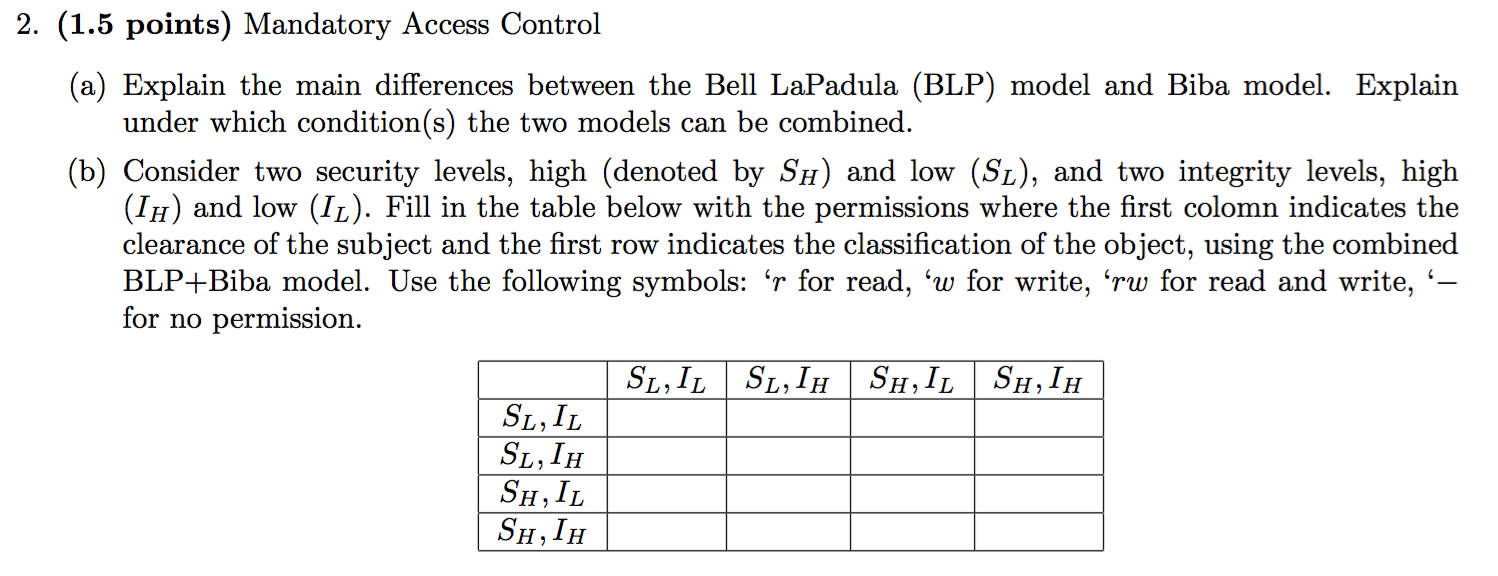
2012-AS1-4-ChineseWall-BLP
- Define a construction to show that a system implementing the Chinese Wall model can support the BLP Model.
2012-EX1-2-ChineseWall-BLP
- Describe the main differences between the Bell-LaPadula model and the Chinese Wall model.
2012-EX2-1-BLP
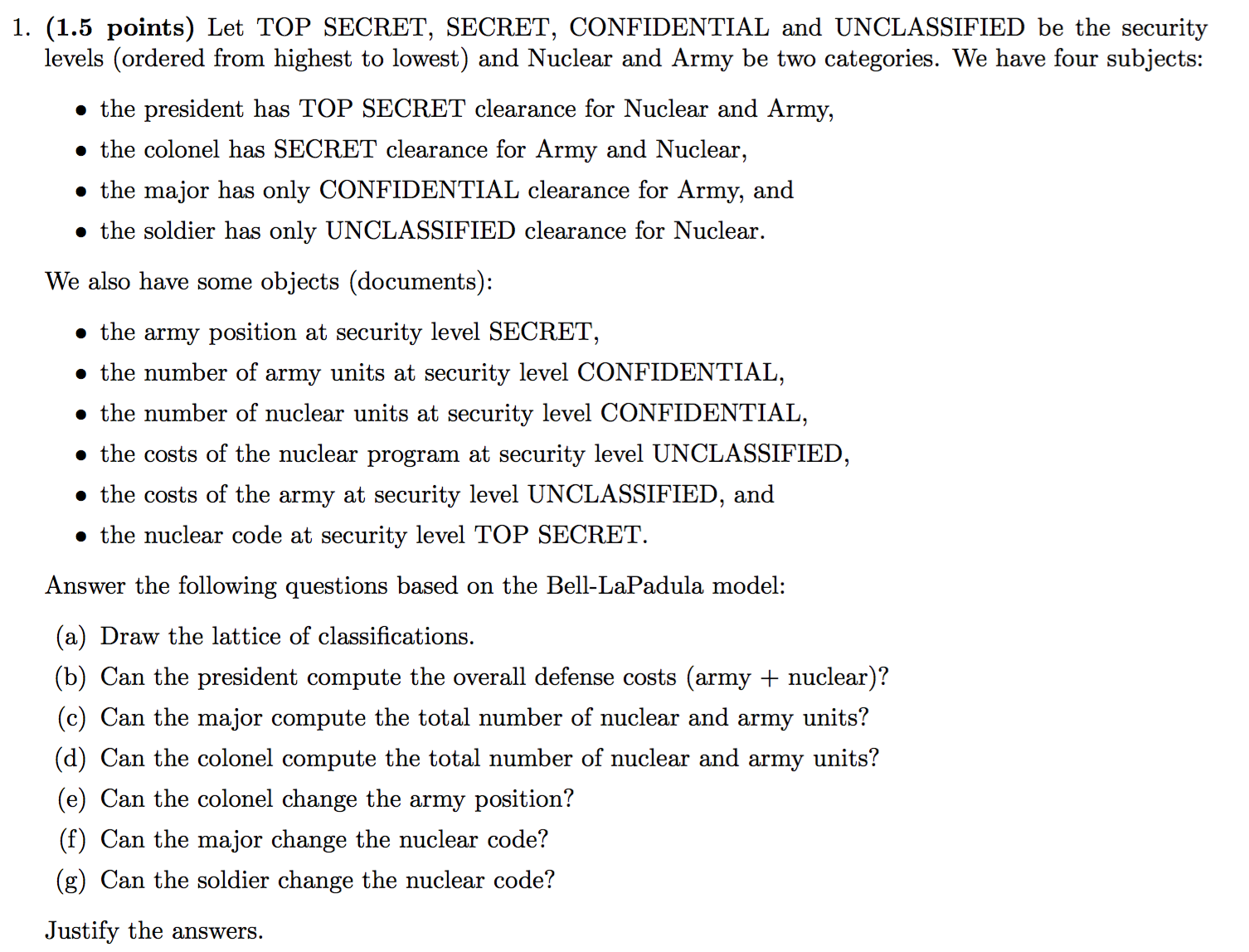
2012-EX2-2-BLP-Biba
- Describe the Bell-LaPadula and Biba models and how these two models can be combined.
Role Based Access Control
Homework
no
2016-AS1-5-RBAC3

2015-s-AS1-4
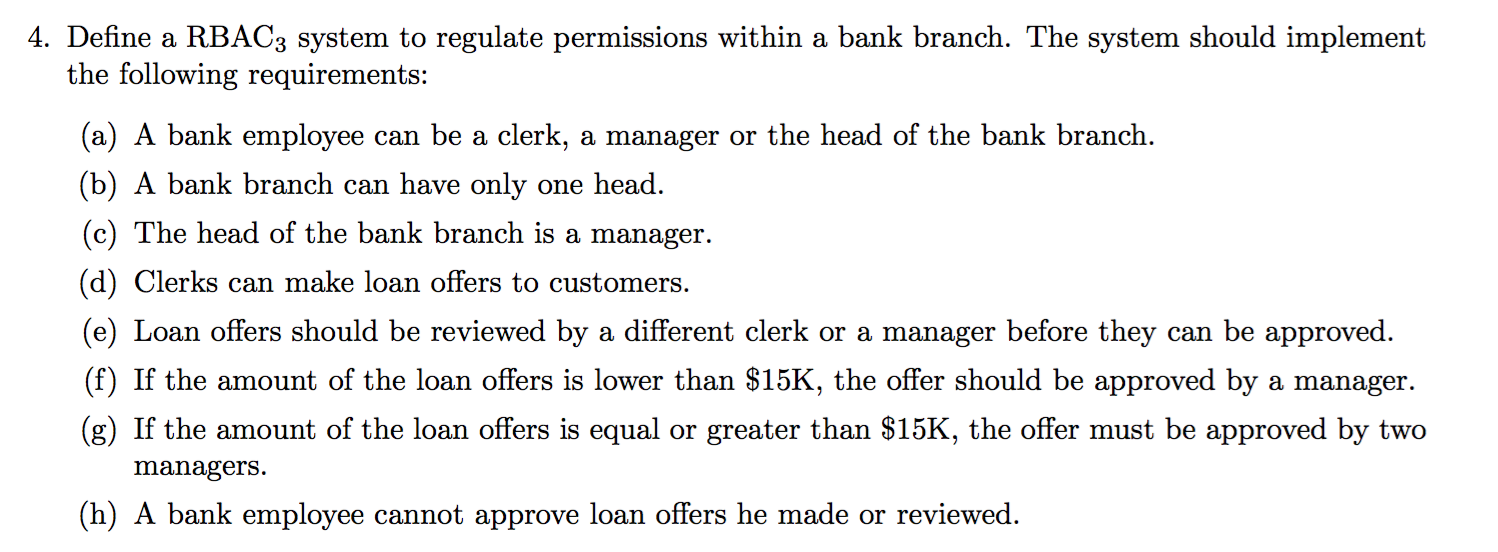
2015-s-AS1-5

2015-AS1-5-RBAC3
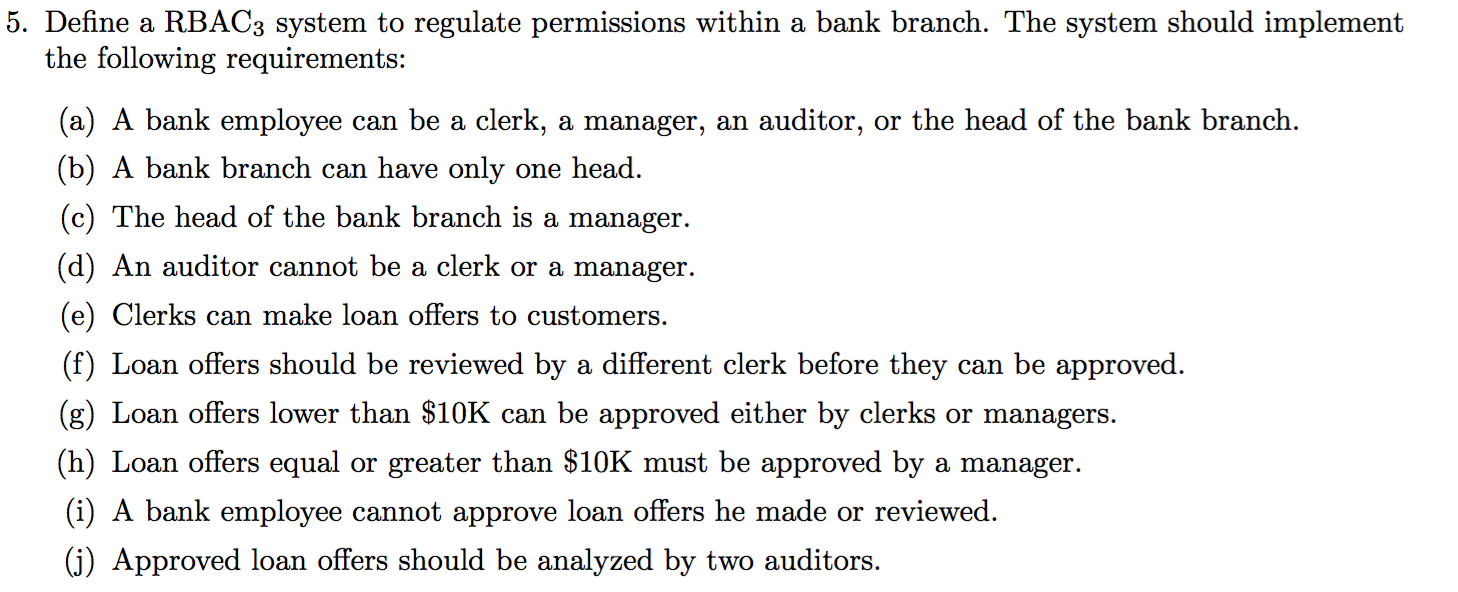
2015-EX2-3-RBAC3
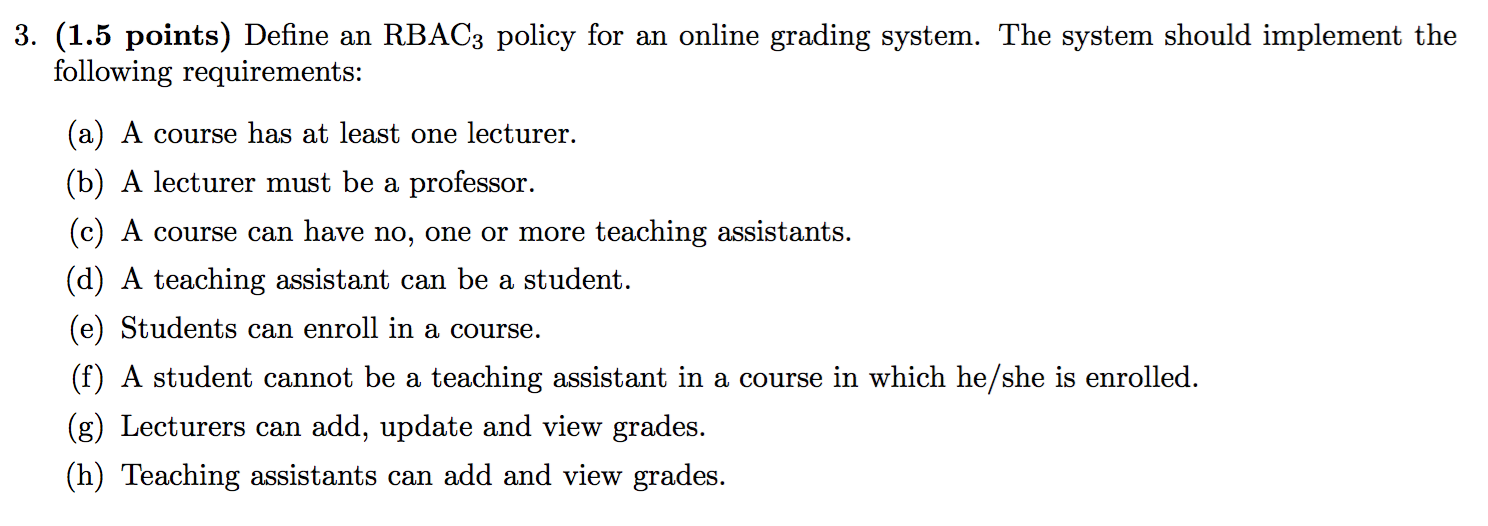
2014-AS1-5-RBAC3

2014-EX2-2-RBAC3
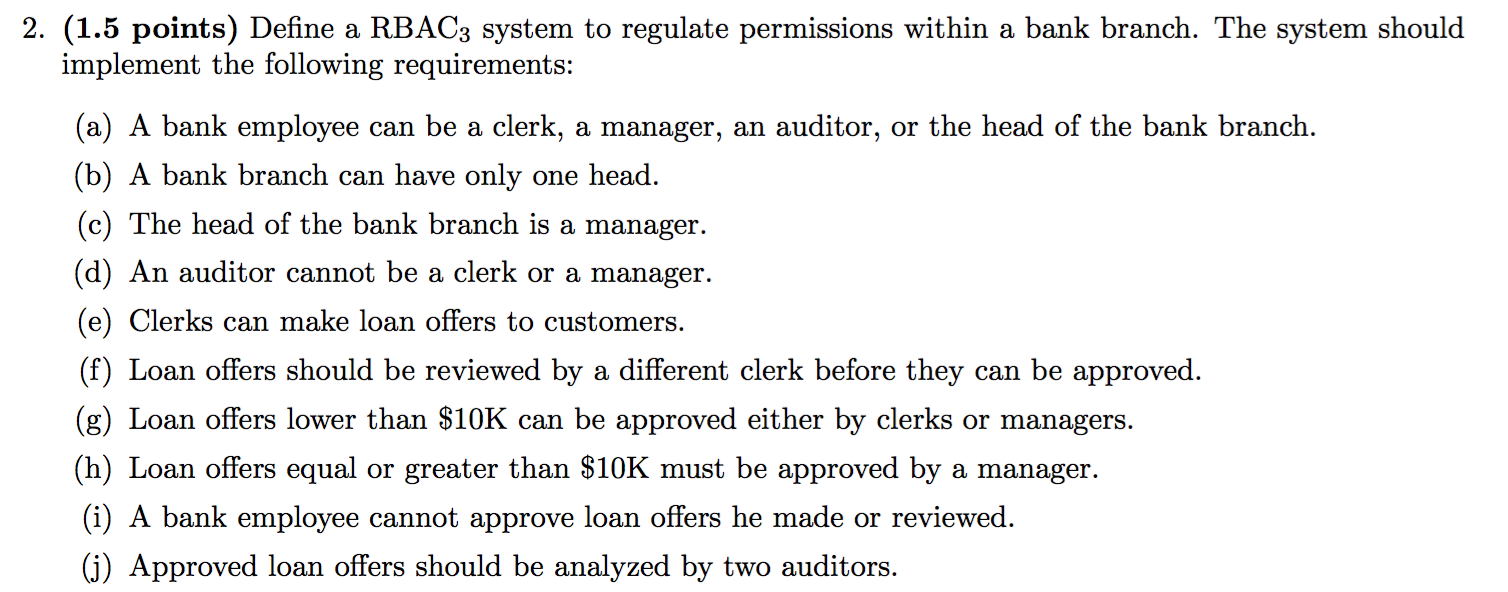
2013-AS1-5-RBAC3

2012-AS1-5-RBAC3


2012-AS1-6-SSD-dsd

2012-AS1-7-DAC_MAC_RBAC

2012-EX1-3-RBAC3
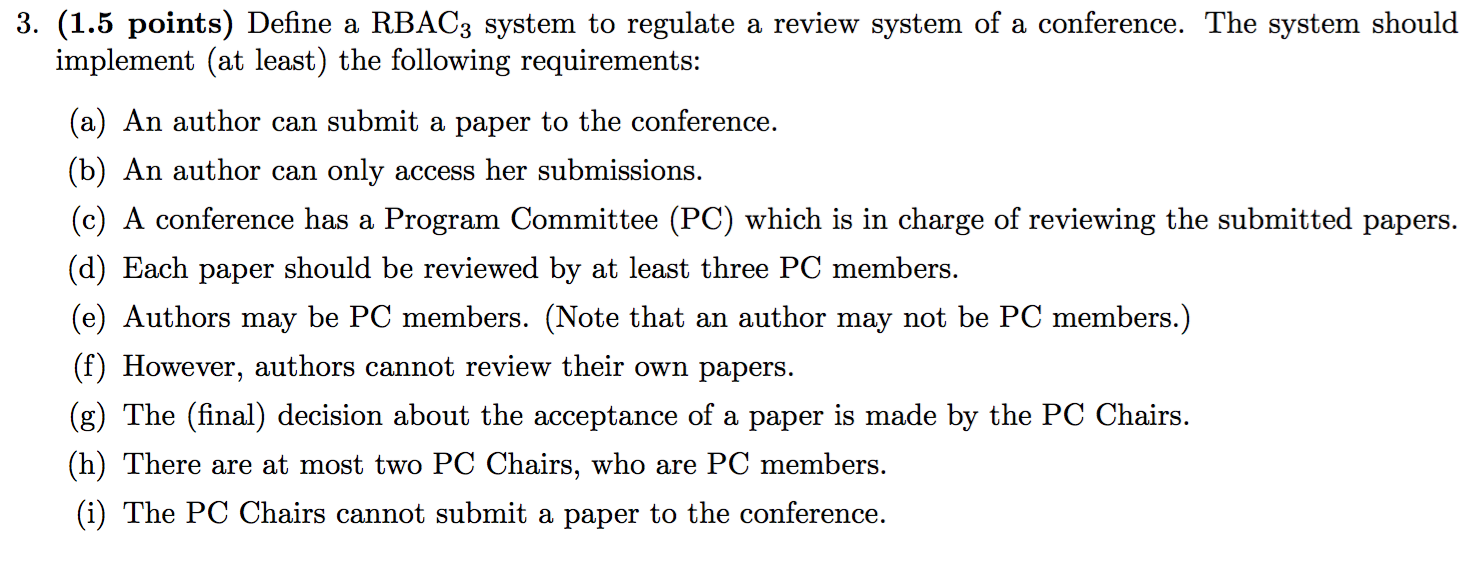
Usage Control
Homework
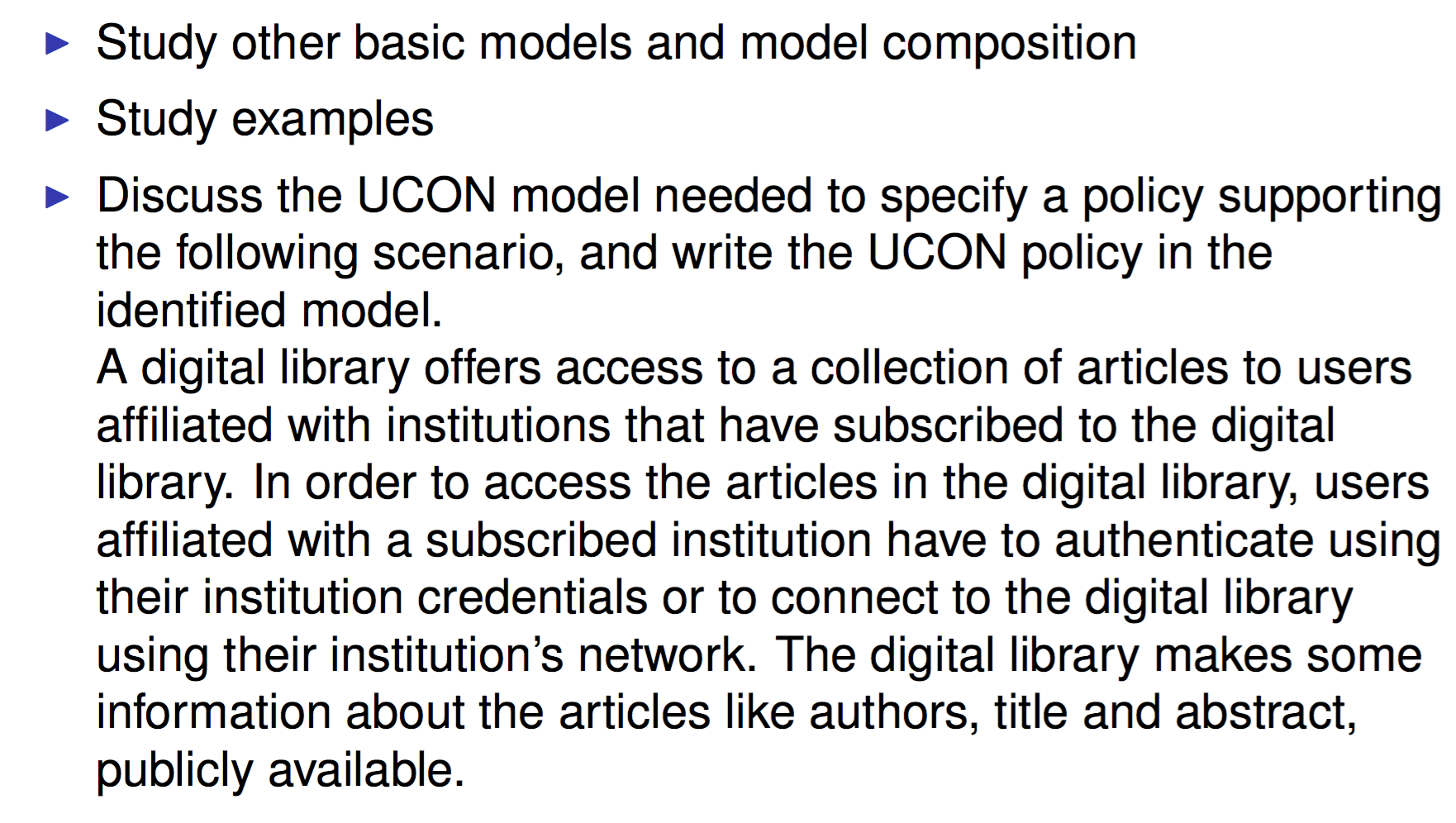
2016-AS2-1

2015-AS2-1

2014-AS2-1

2014-EX1-5-UCON-Bibalowwatermark
- Represent the Biba model with low-water mark for subjects in the UCON model.
2014-EX2-4
- List and explain the decision properties in UCON. Decribe how they are modeled in the language.
2013-AS2-1

2013-EX2-4

2012-AS2-1

2012-EX2-3

Introduction to Privacy
2015-EX1-3-ReputationBasedTrustManagement-RuleBasedTrustManagement
- Explain briefly how the concept of risk plays a role in reputation-based trust man- agement and rule-based trust management.
2014-EX1-4-TrustNegotiation

2013-EX1-4-ReputationBasedTrustManagement-RuleBasedTrustManagement
- Explain briefly the main differences between a rule-based trust management system and a reputation system. Give also two scenarios in which the first one is more suitable for a reputation system and the second one is more suitable for a rule-based system.
2013-EX2-5-datacentric-linkcentricprotection

2012-EX2-6-confidentialityattransport

Privacy-aware Access Control 1
Purpose-based Access Control
Homework
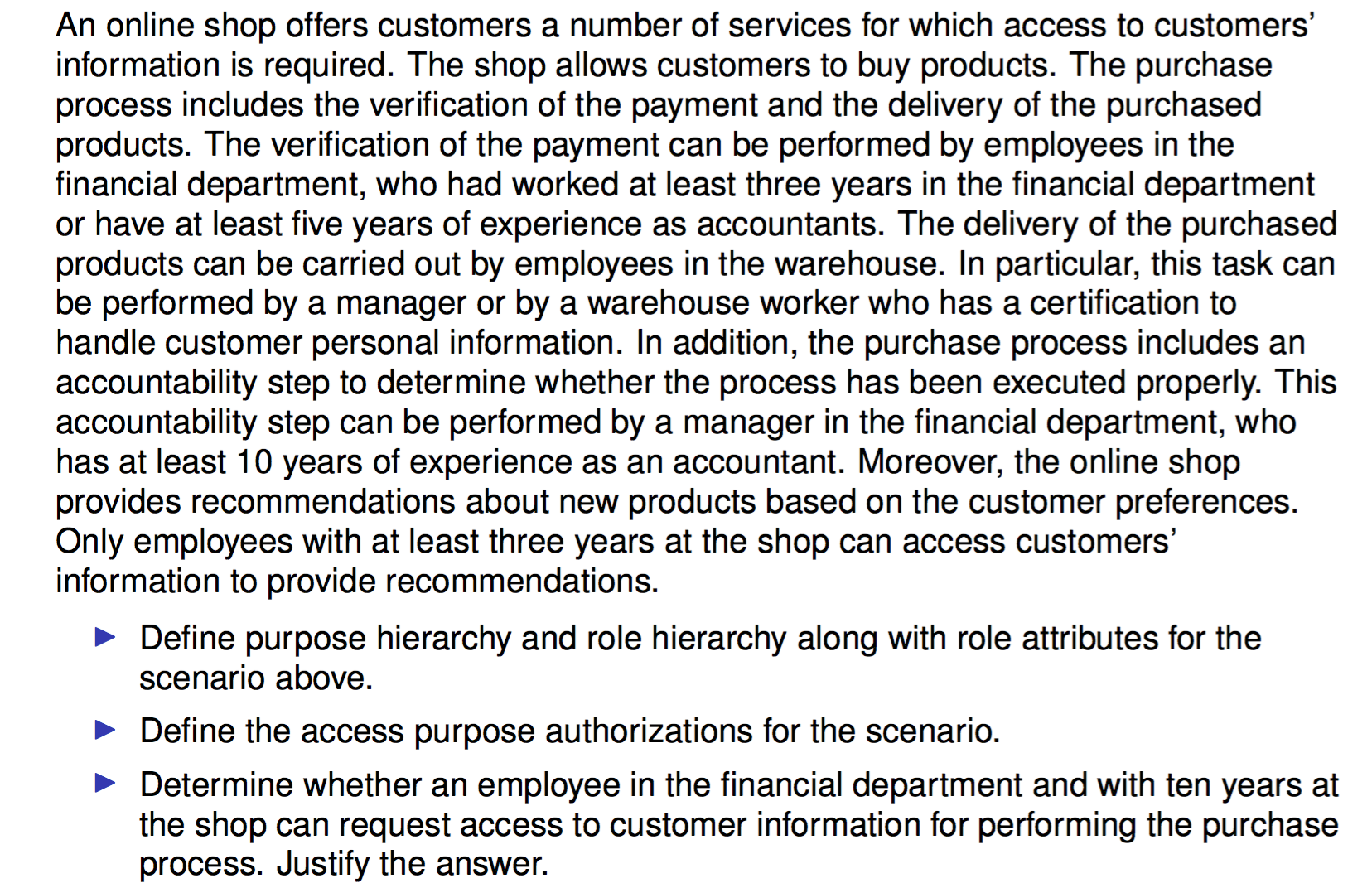
2016-AS2-2

2015-s-AS2-2
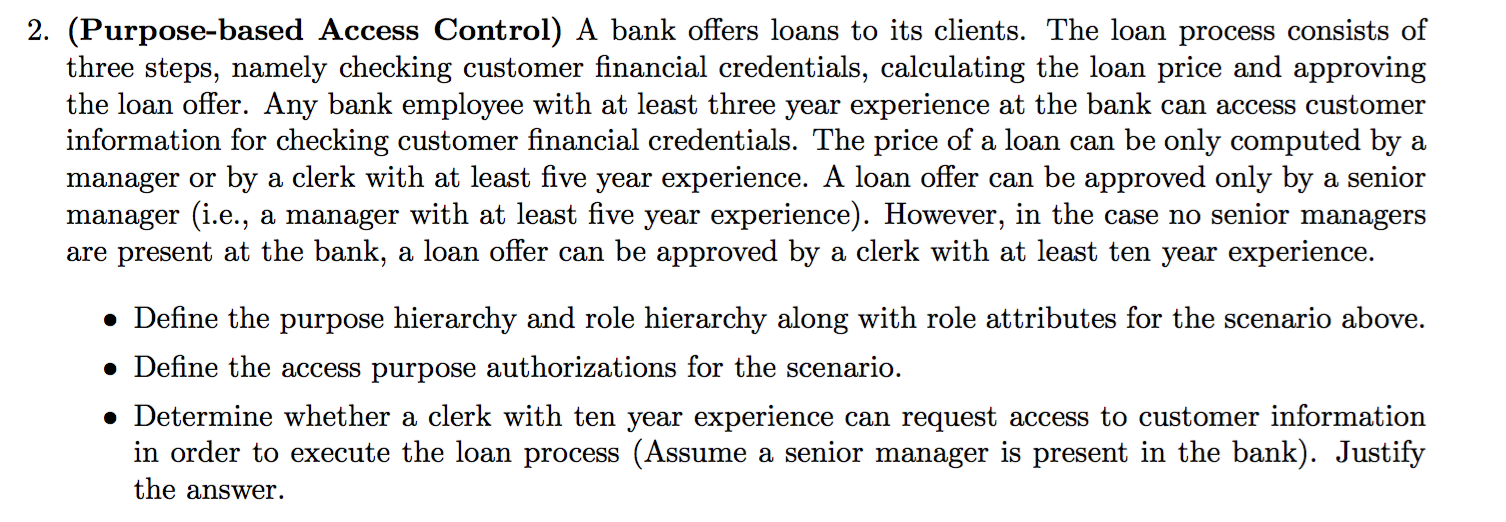
2015-AS2-2
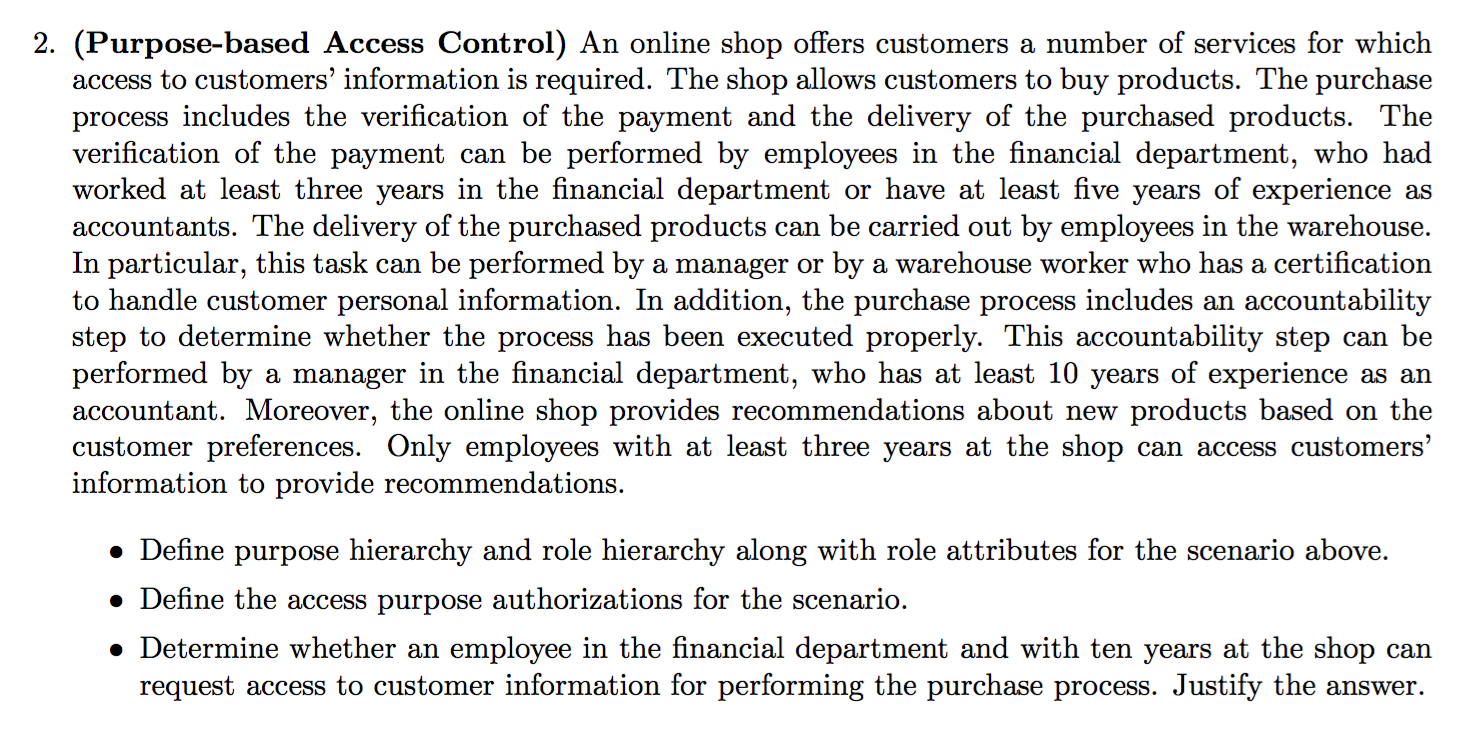
2014-AS2-2

2014-EX2-5

2013-AS2-2

2013-EX1-5
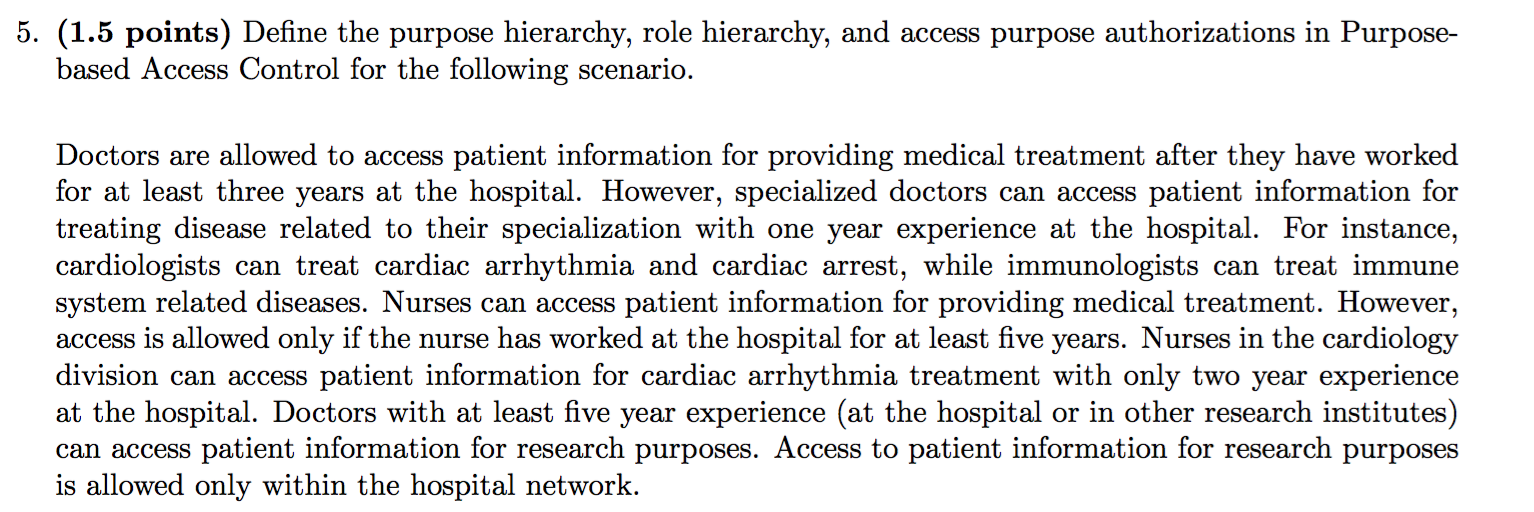
2012-AS2-2

2012-EX1-5-accesspurposeverification
- Describe the access purpose verification in Purpose-based Access Control.
Privacy-aware Access Control 2
Homework
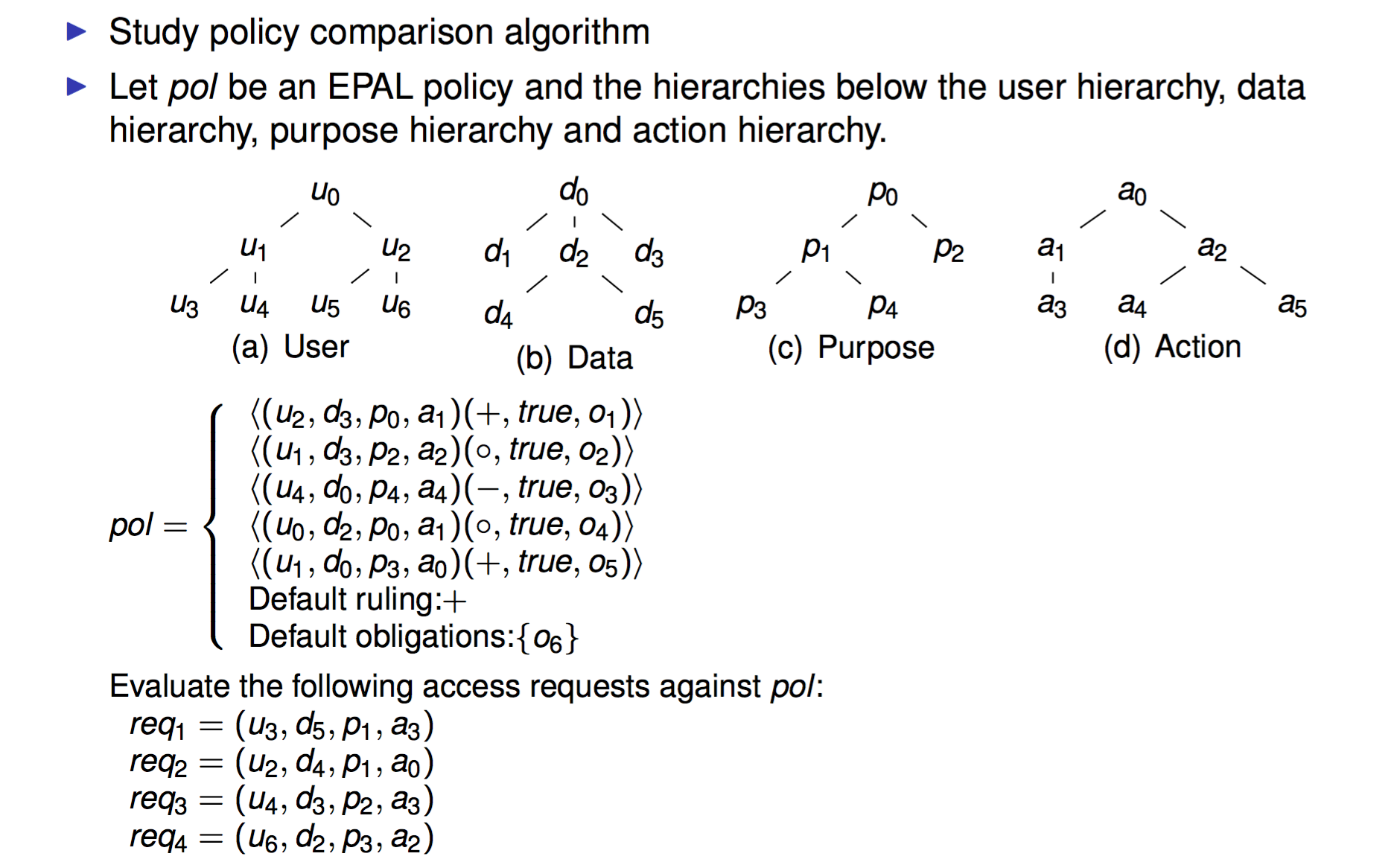
2016-AS2-3-EPAL
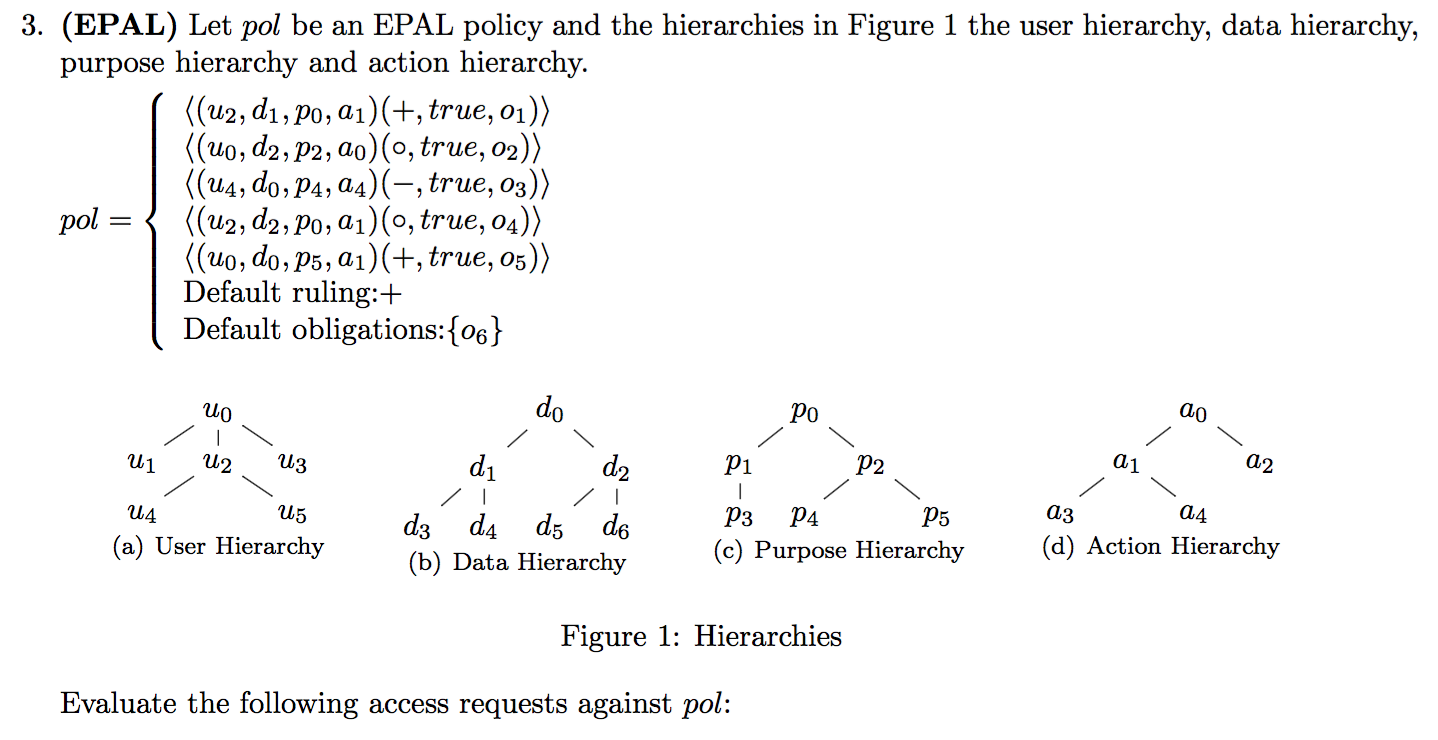
 2015-AS2-3-EPAL
2015-AS2-3-EPAL
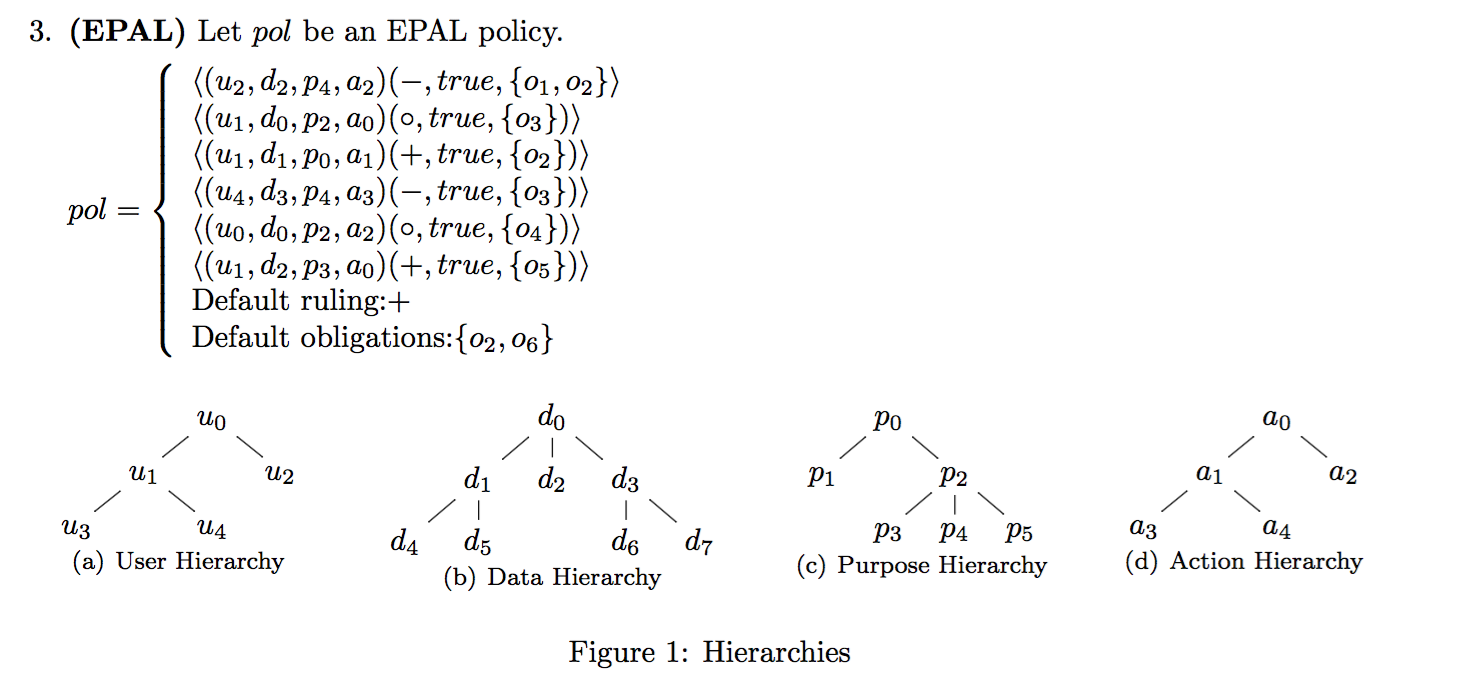
 2015-s-AS2-3
2015-s-AS2-3
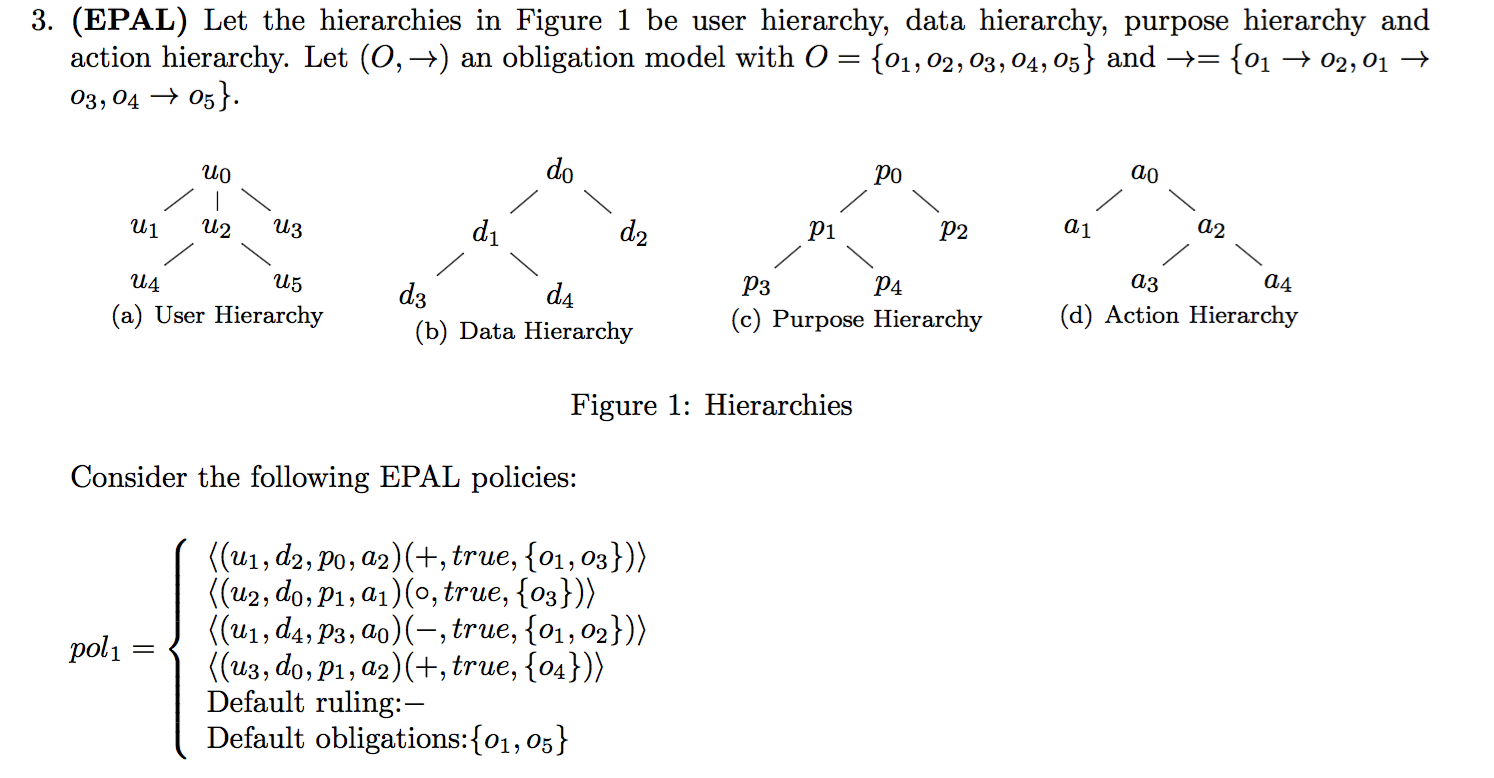
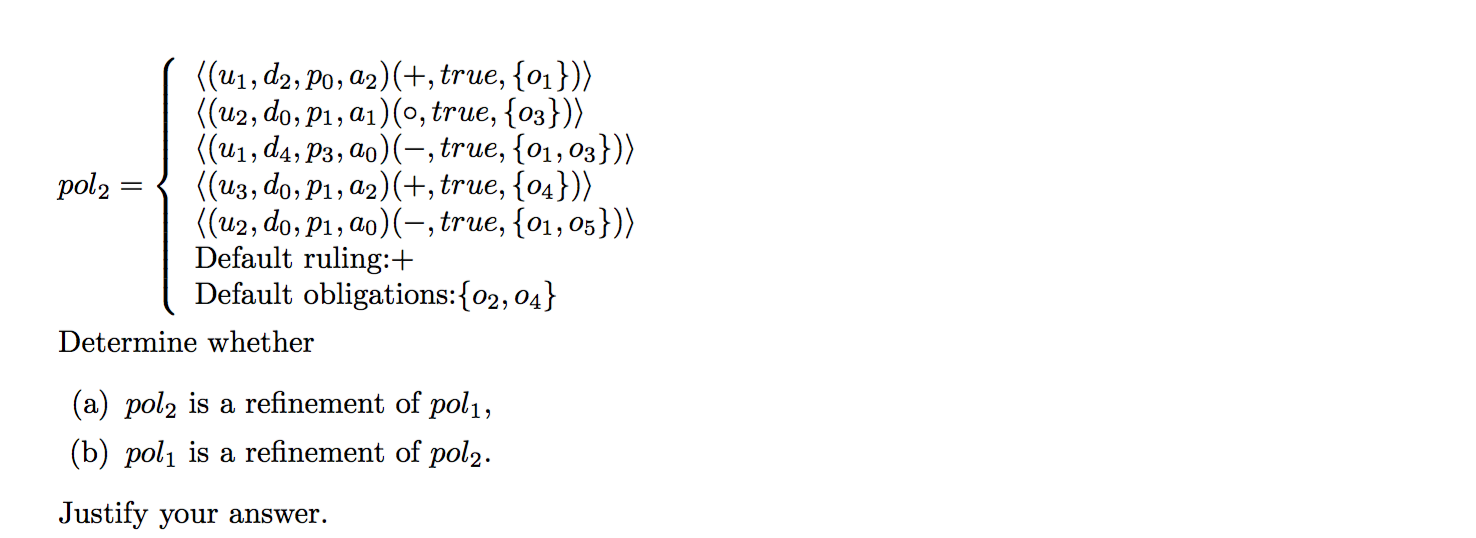 2015-EX1-4-EPAL
2015-EX1-4-EPAL
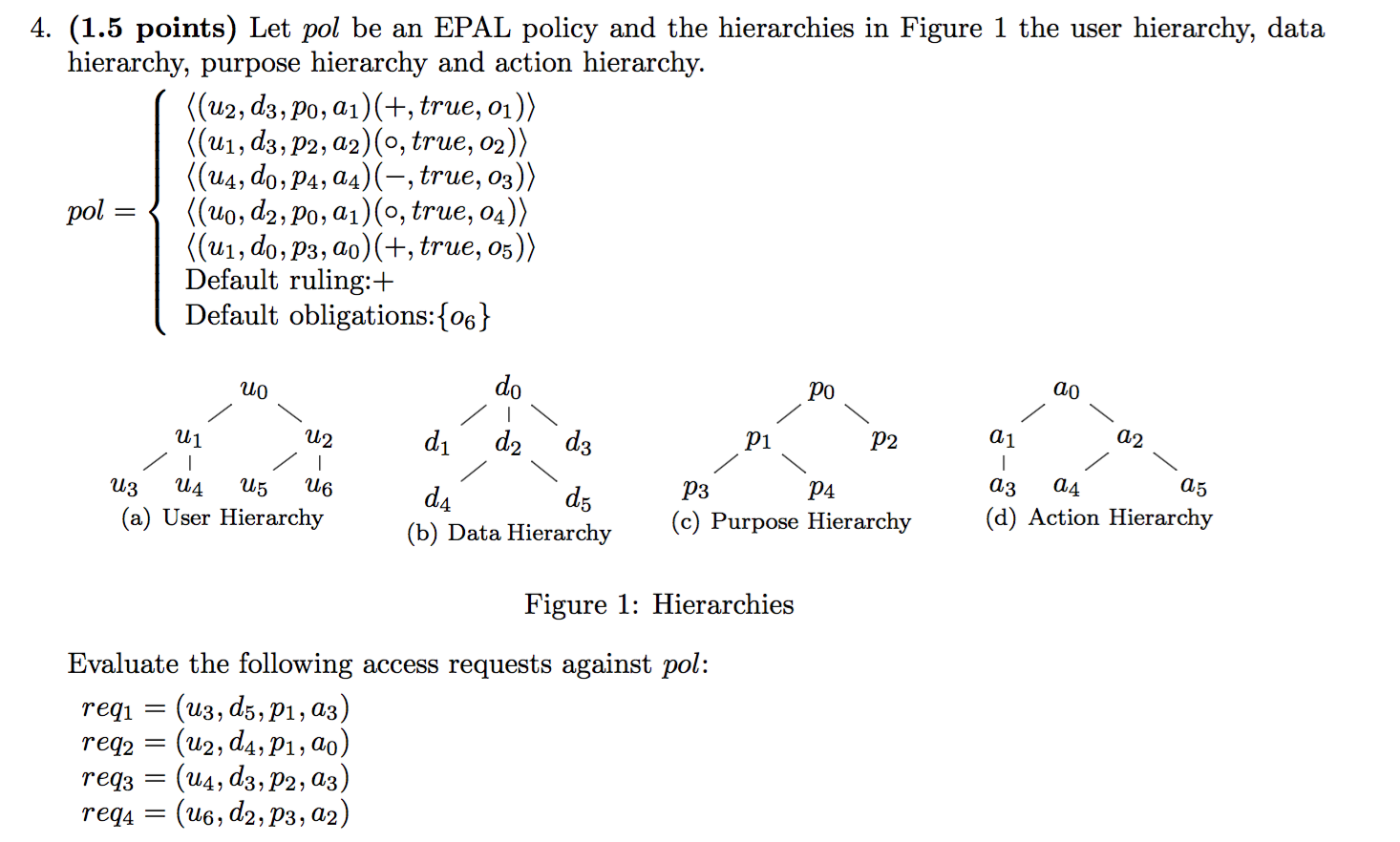 2015-EX2-5-EPAL
2015-EX2-5-EPAL
- Explain the notion of policy refinement in Enterprise Privacy Authorization Language (EPAL) and give a scenario in which policy refinement is needed. Describe the main steps of the scope- based policy comparison algorithm for policy refinement.
2014-AS2-3-EPAL
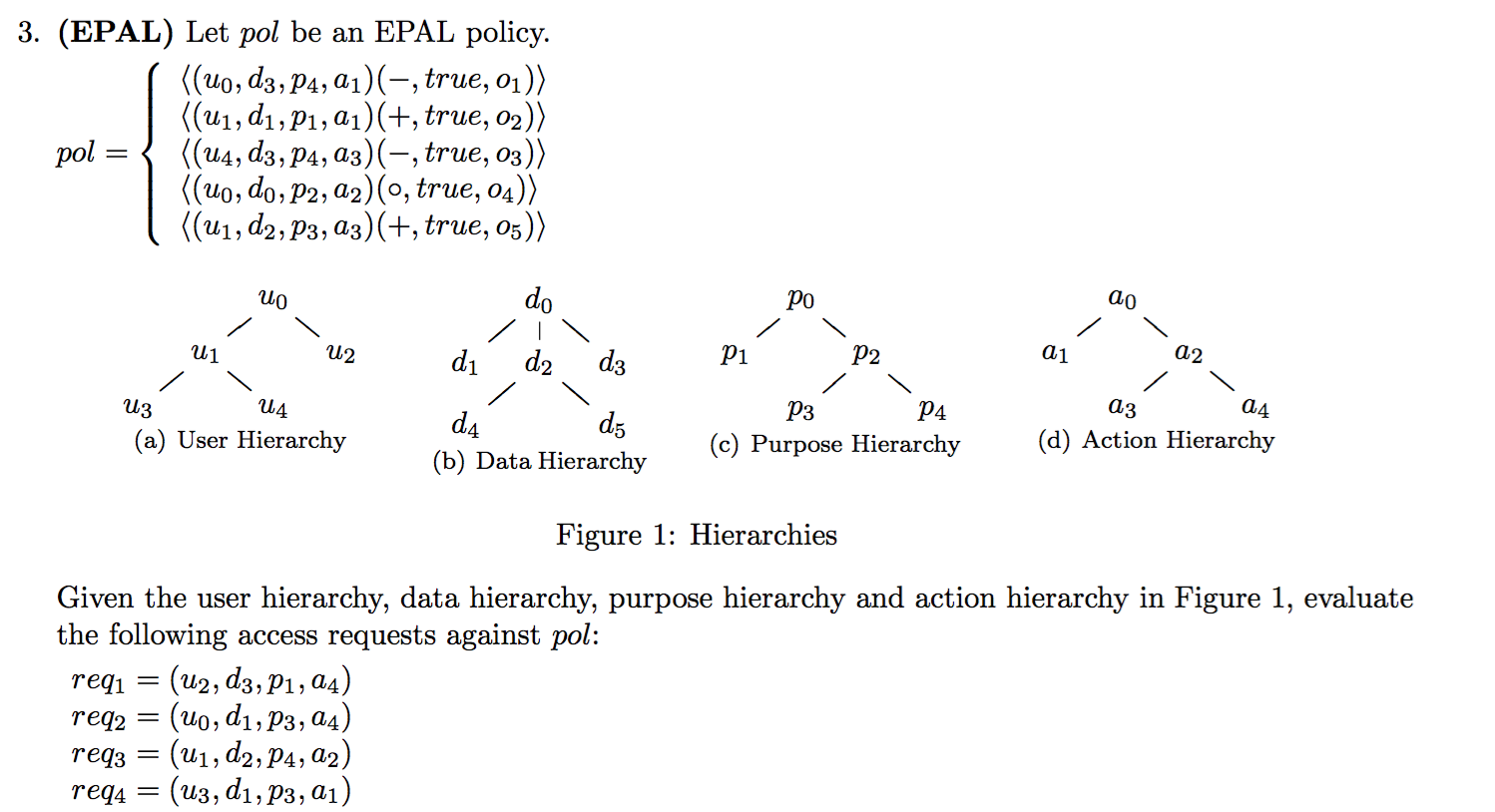
2014-EX1-6-EPAL
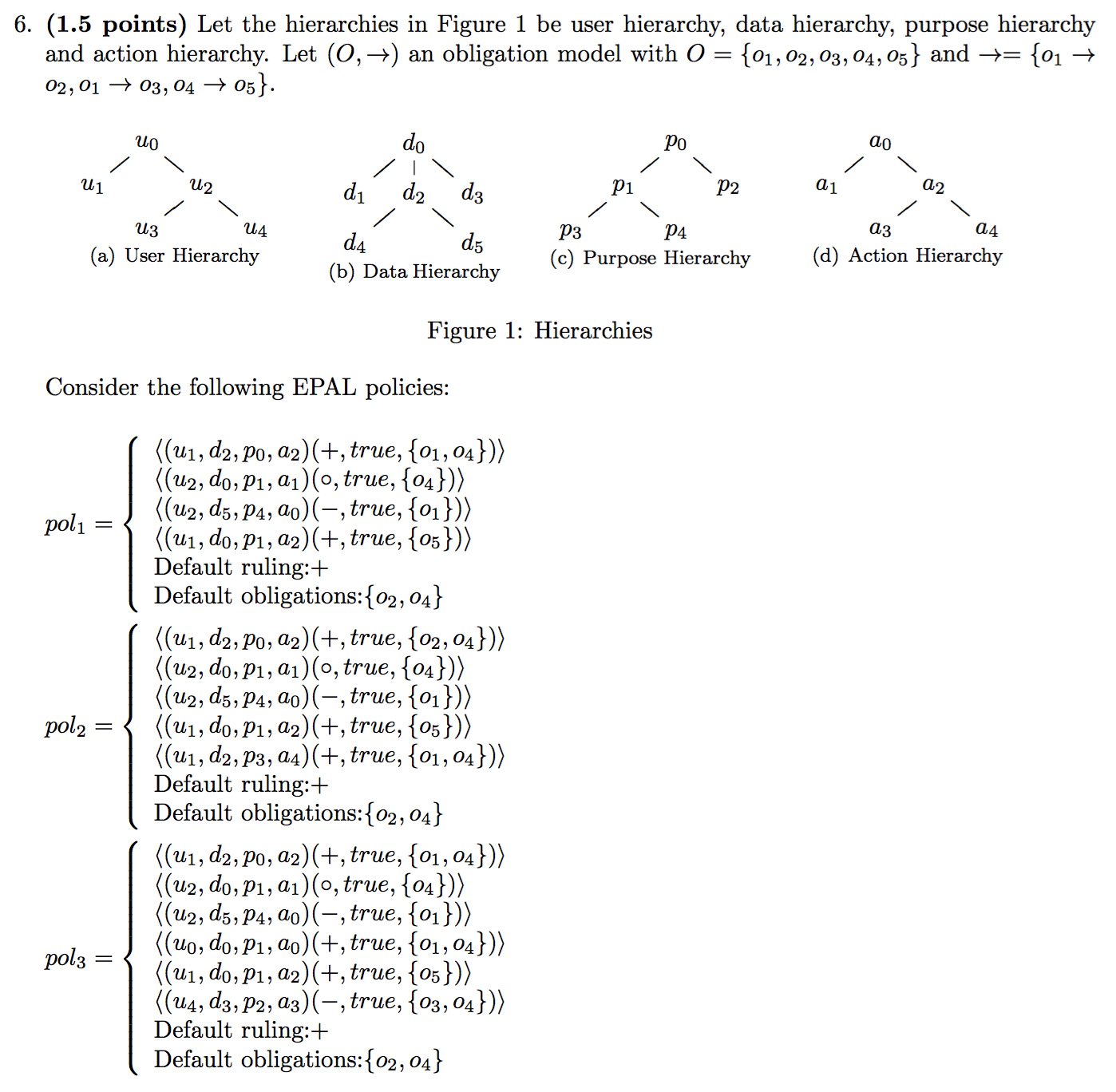

2013-AS2-3-EPAL
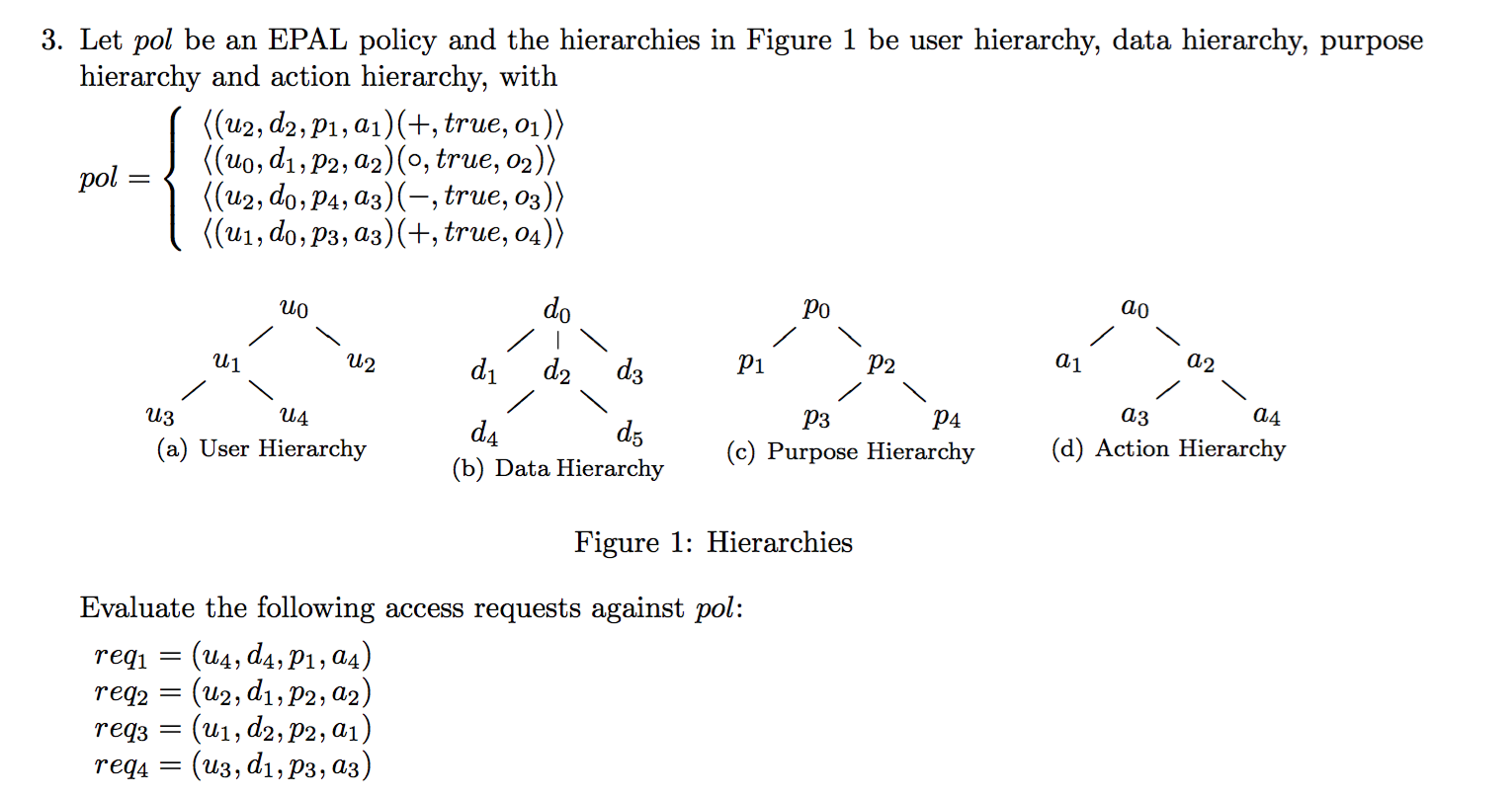
2013-EX1-6-EPAL
- Explain the notion of policy refinement in Enterprise Privacy Authorization Language (EPAL). Describe the scope-based policy comparison algorithm for policy refinement.
2012-AS2-3-EPAL
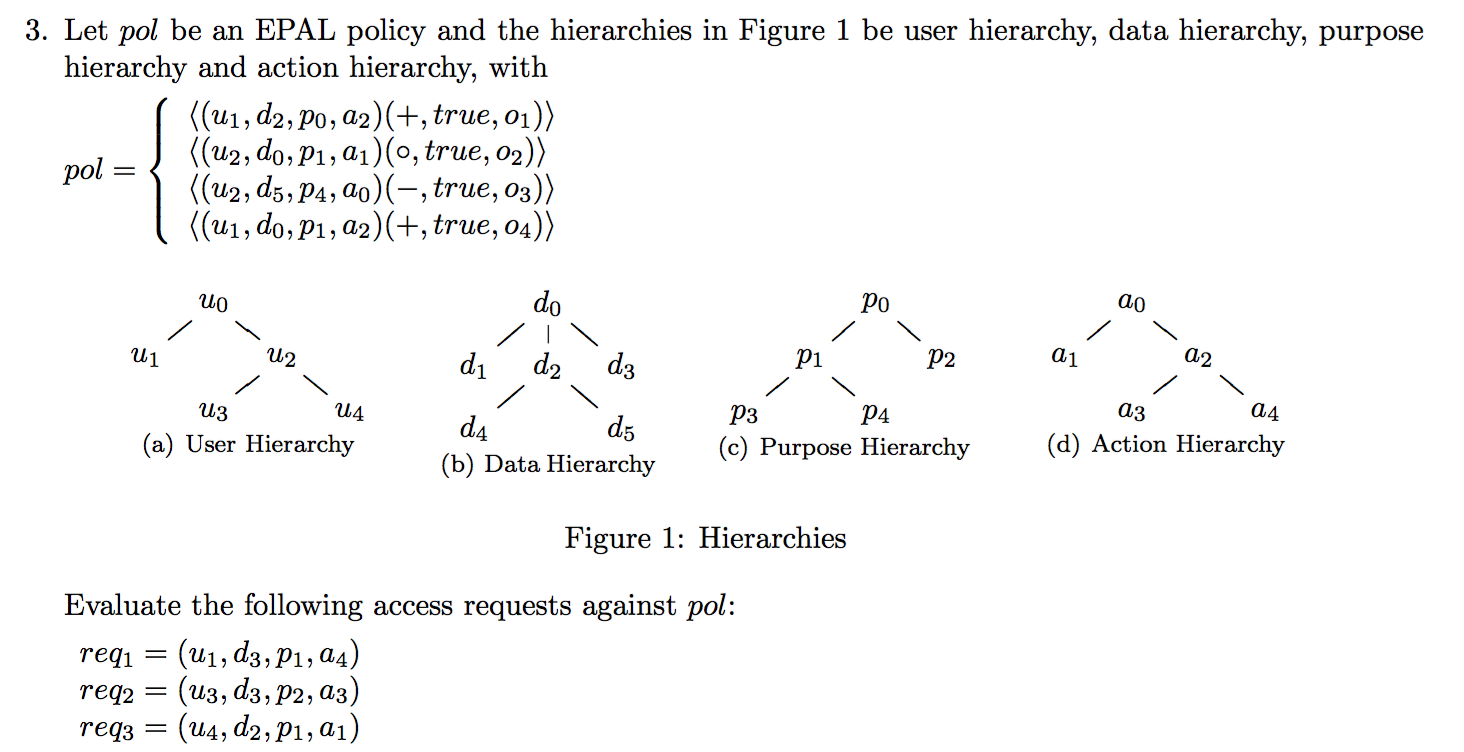 2012-EX2-4-EPAL
2012-EX2-4-EPAL
- Describe the EPAL policy model.
eXtensible Access Control Markup Language(XACML) 1
eXtensible Access Control Markup Language(XACML) 2
2016-AS2-4
2015-AS2-4
2015-EX1-6
2015-EX2-6
2014-AS2-4
2014-EX1-7
2014-EX2-6
2013-AS2-4
2013-EX1-7
2013-EX2-6
2012-AS2-4
2012-EX1-6
2012-EX1-7-RABC1-XACML
2012-EX2-7
Reduction of Access Control Decisionss
2015-EX1-5-D3-D7

RT
2015-EX1-2-RT0
2015-EX2-4-RT0
2014-EX1-3-RT0
2014-EX2-3-RT0
2013-EX1-3-RT0
2013-EX2-3-trustmanagementlanguageRT
2012-EX1-4-RT0
2012-EX2-5-RT